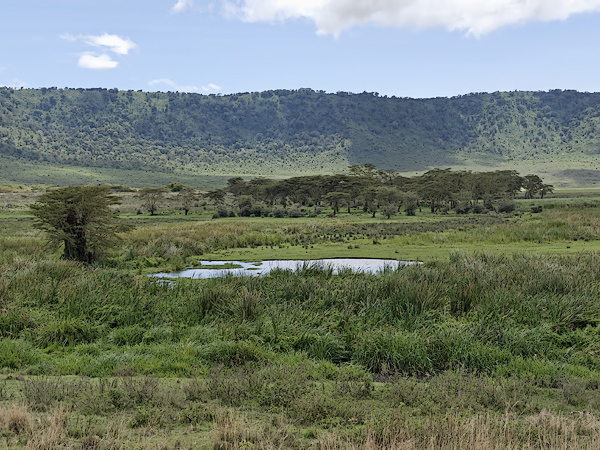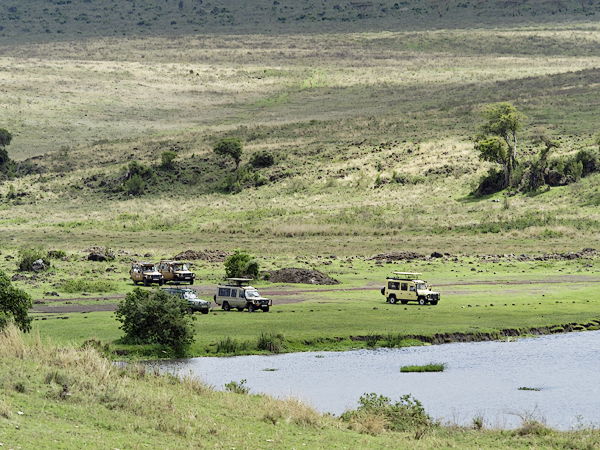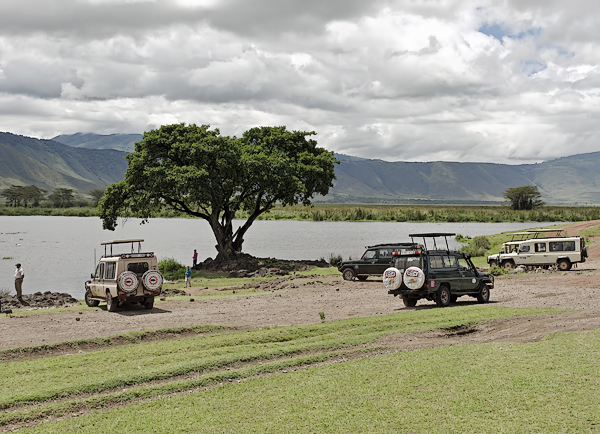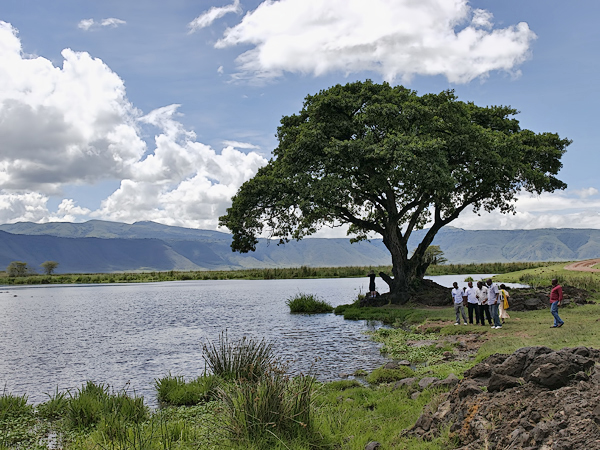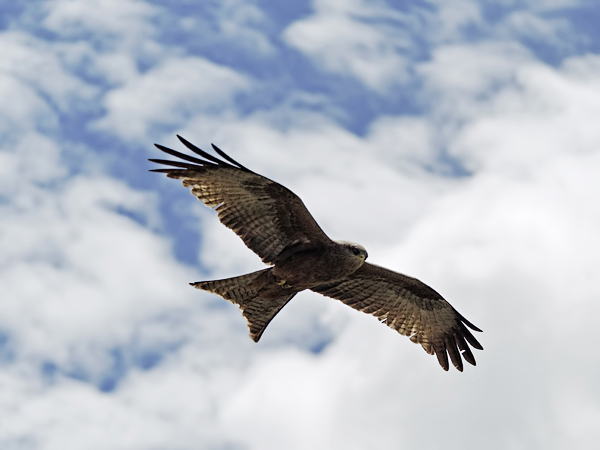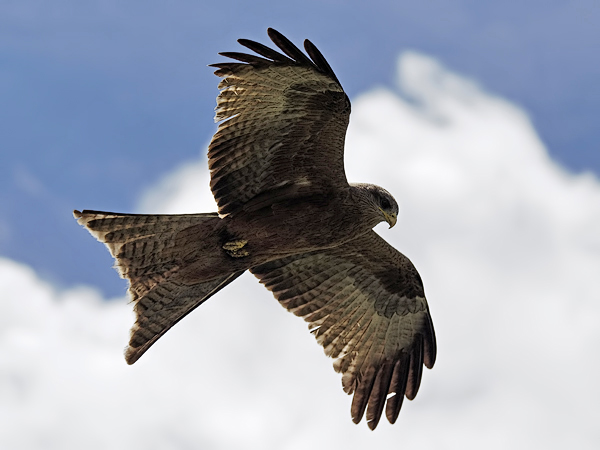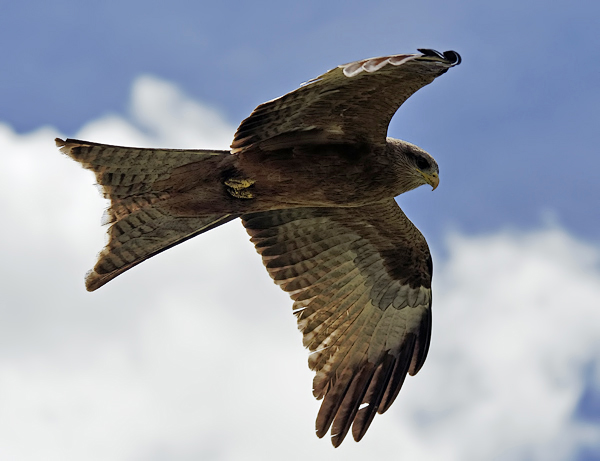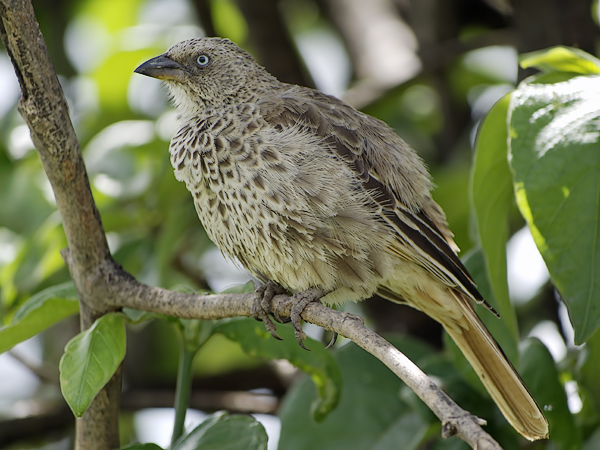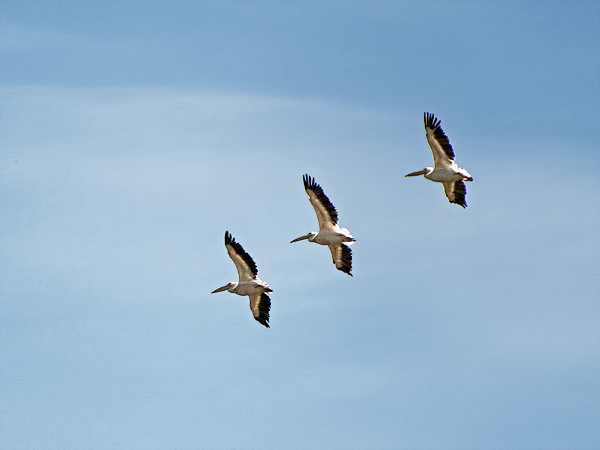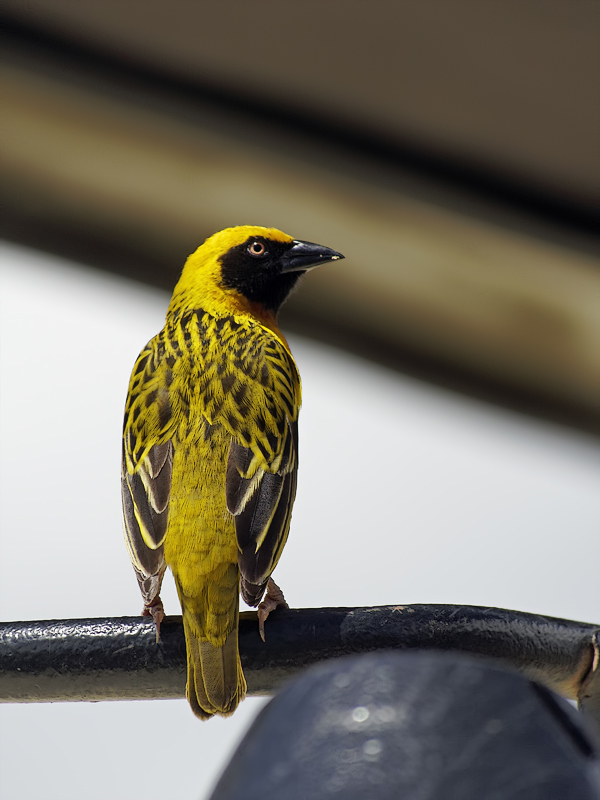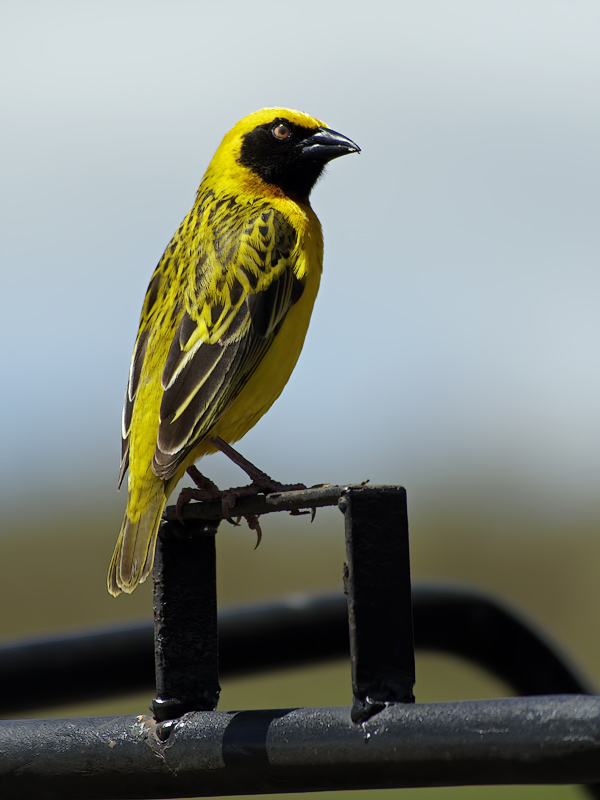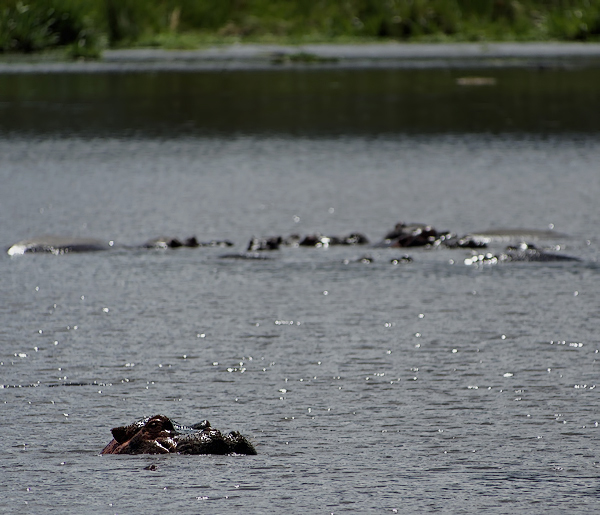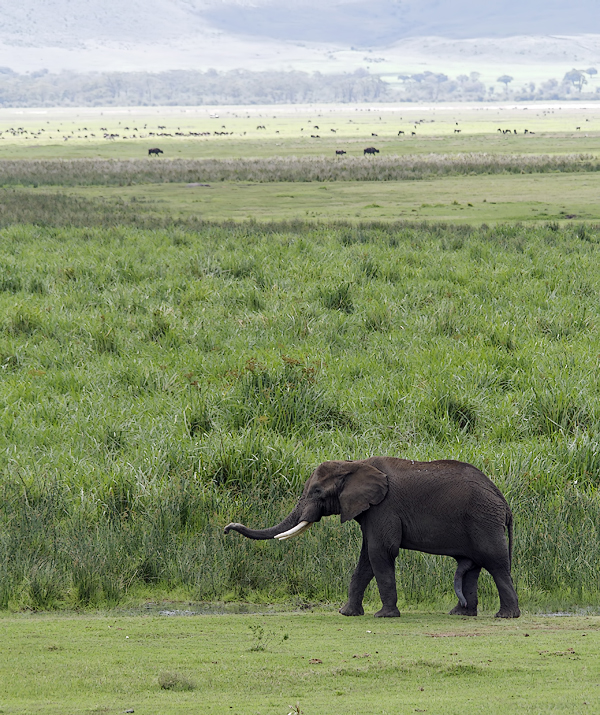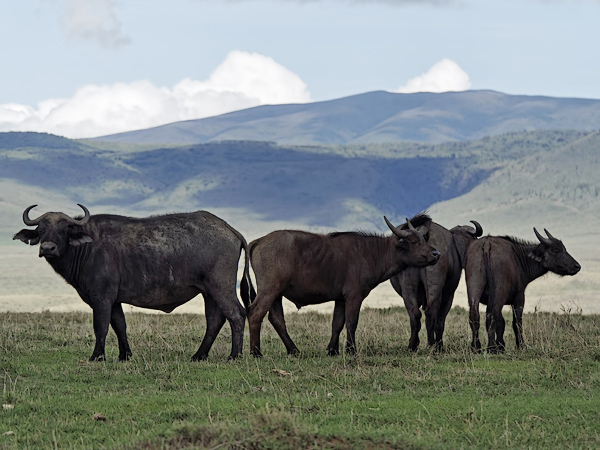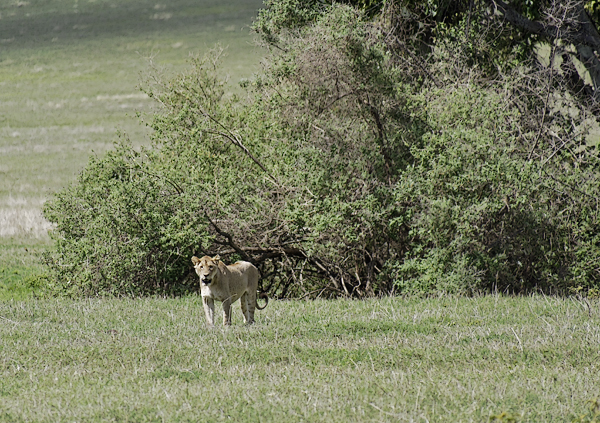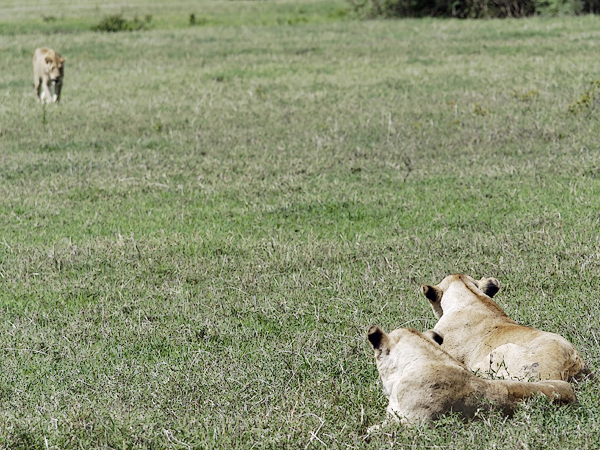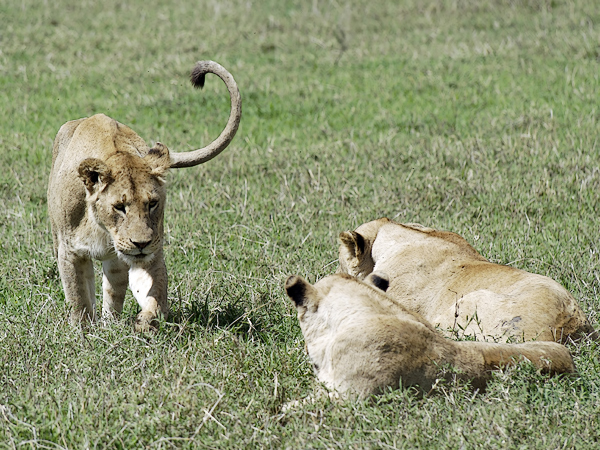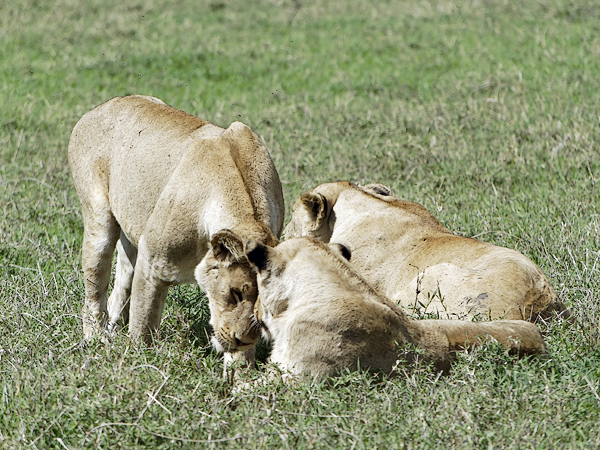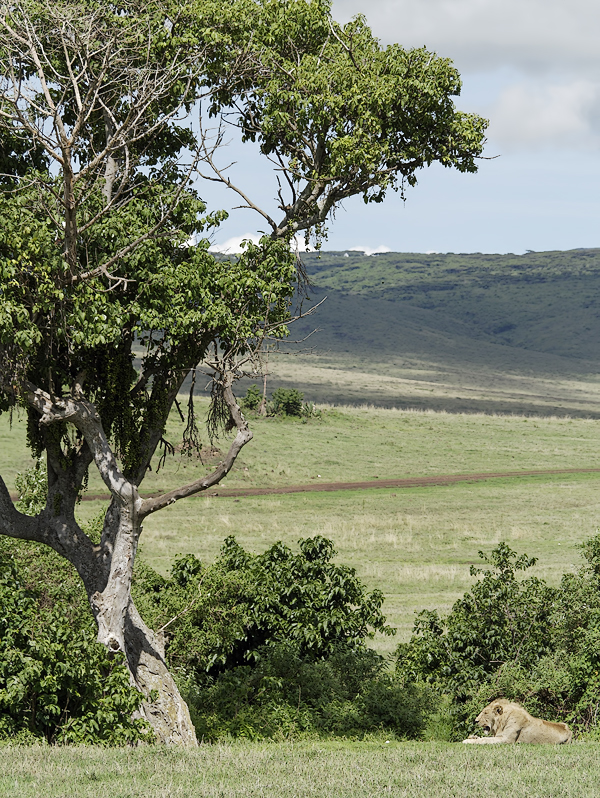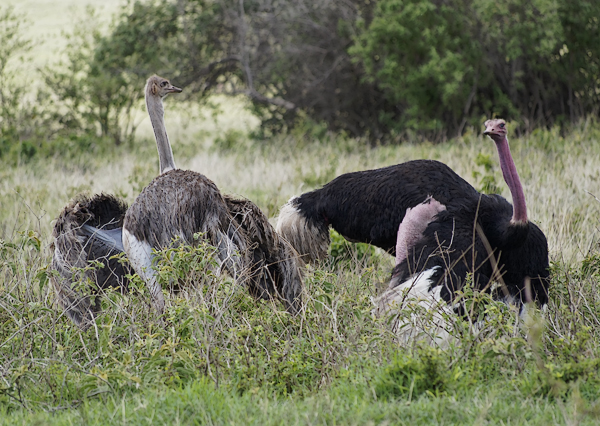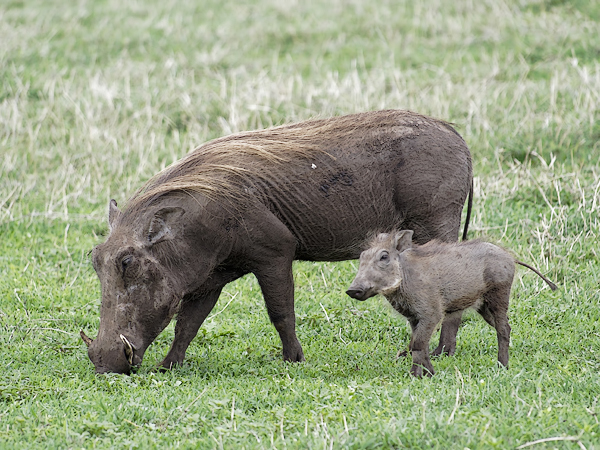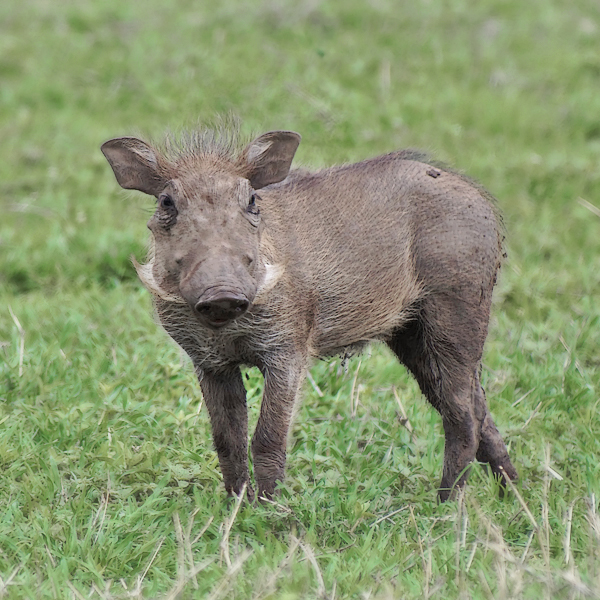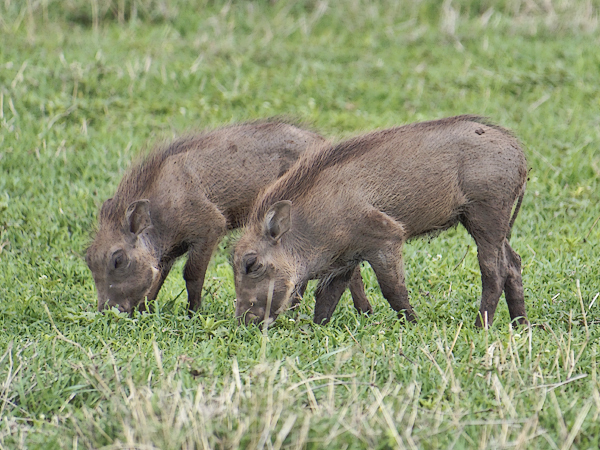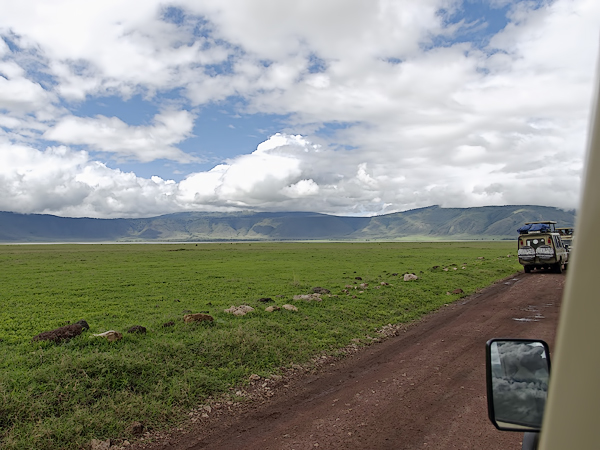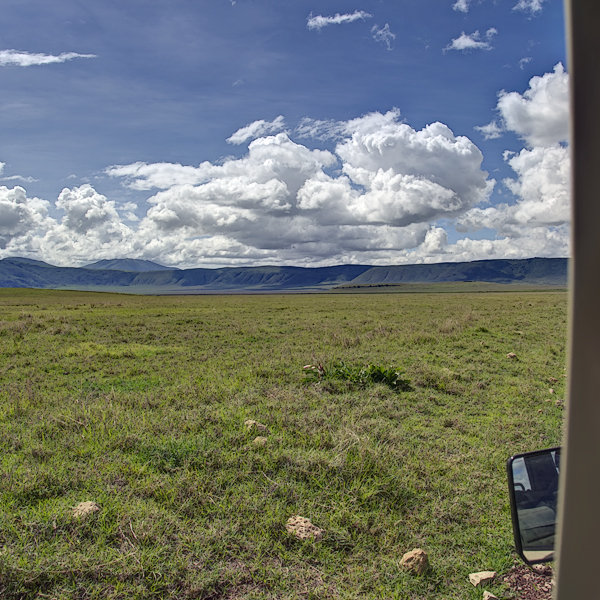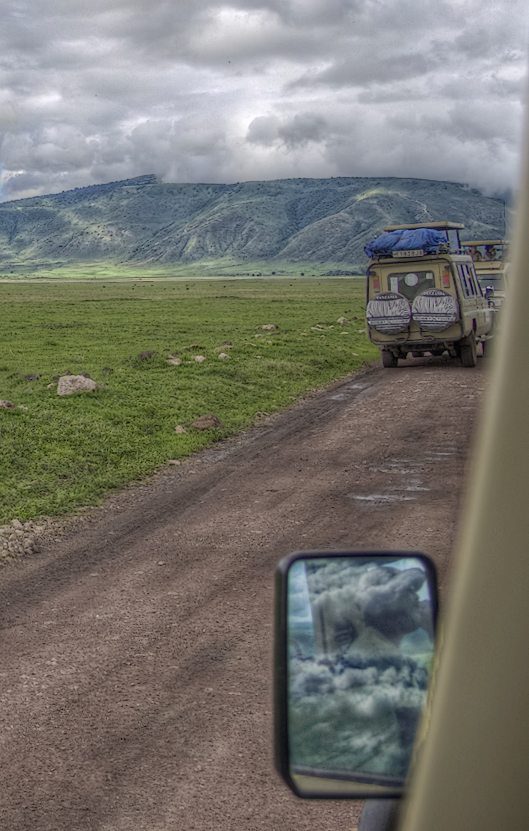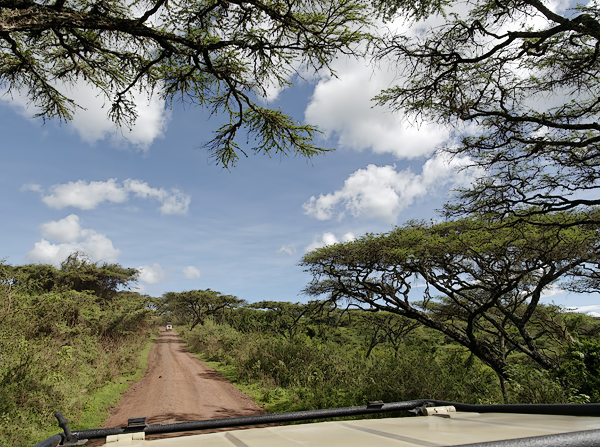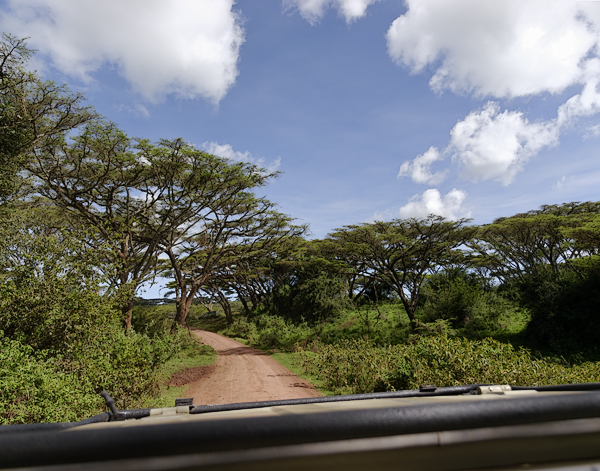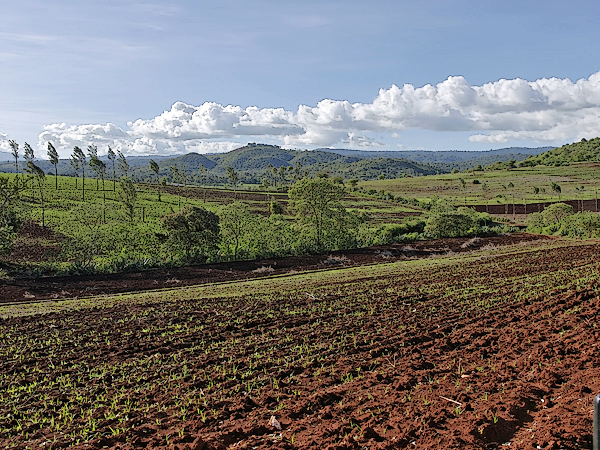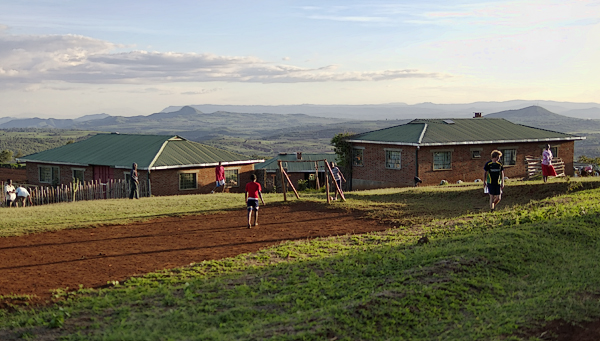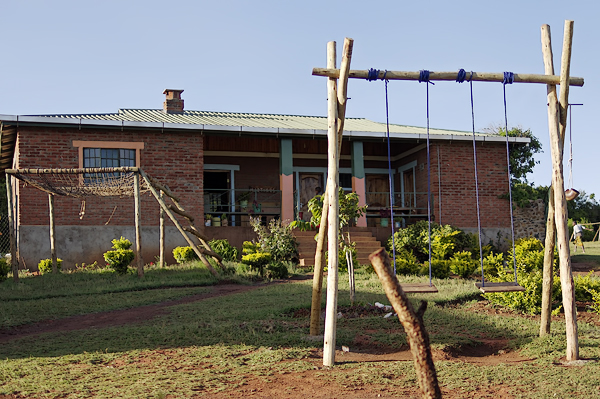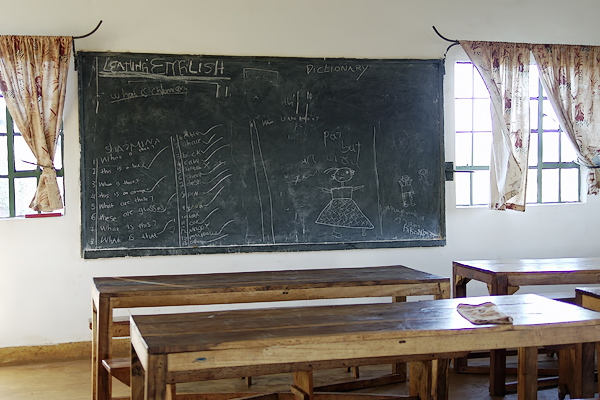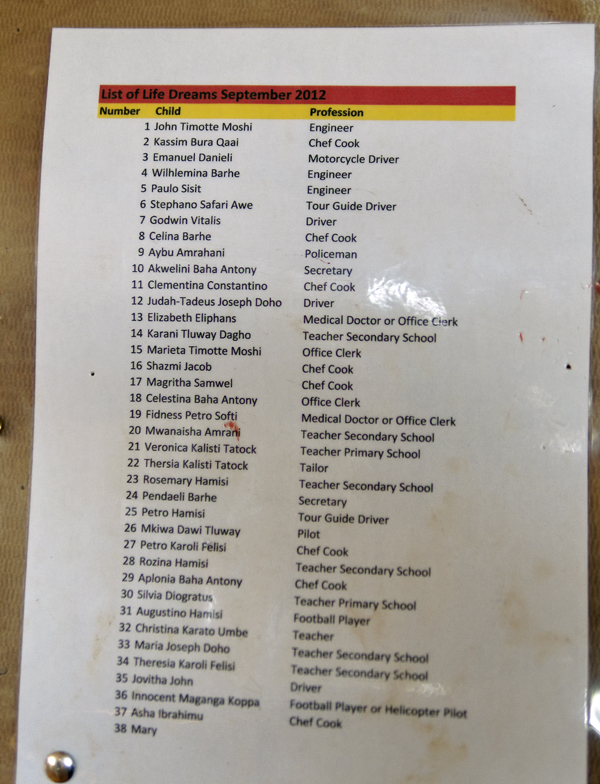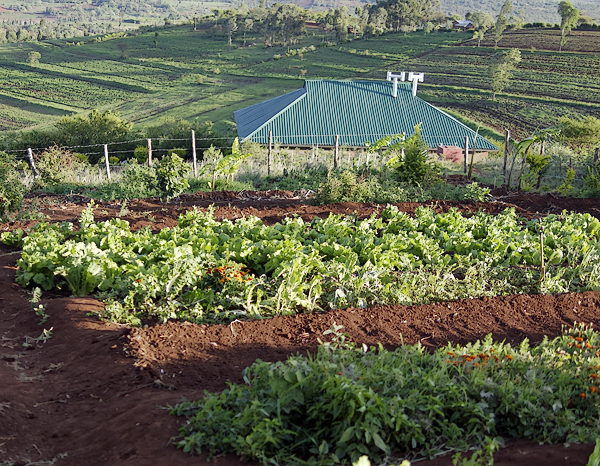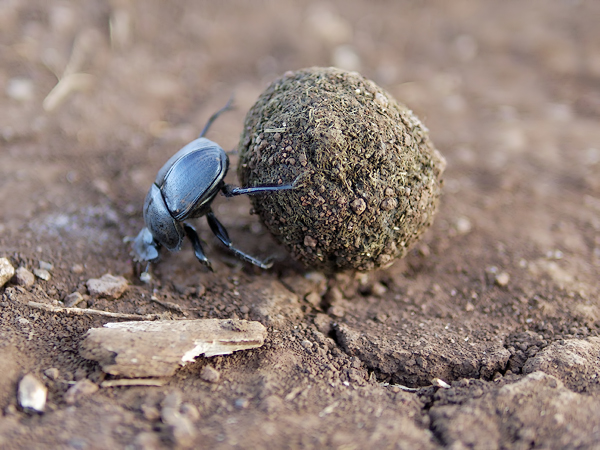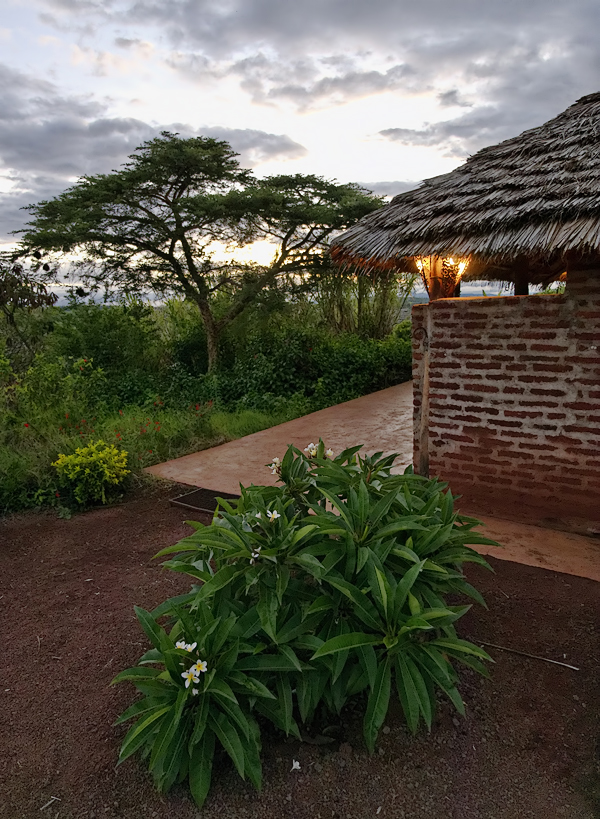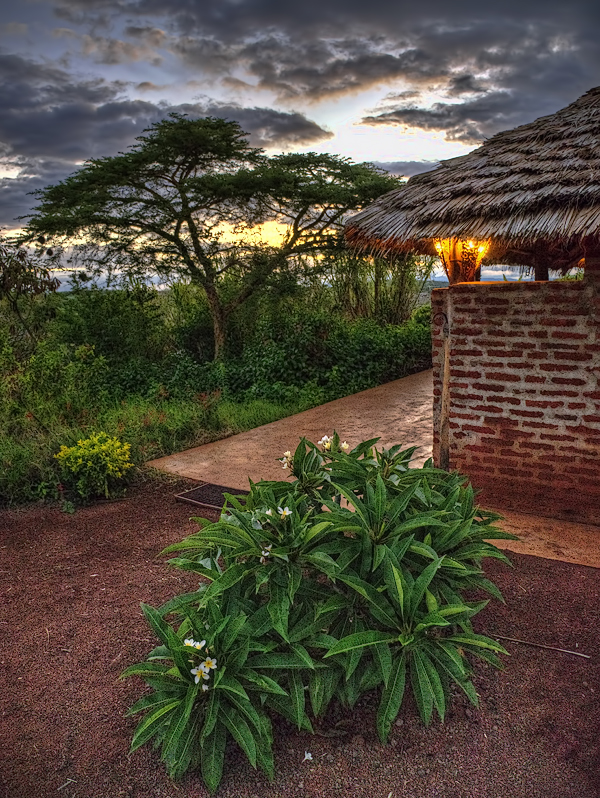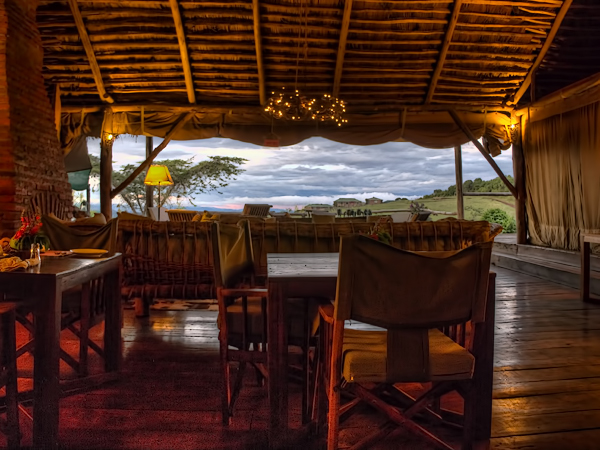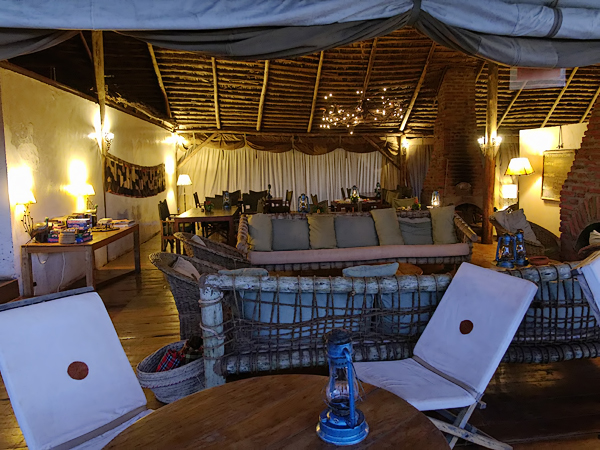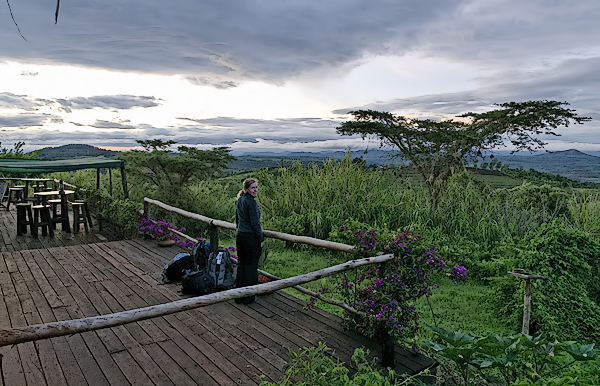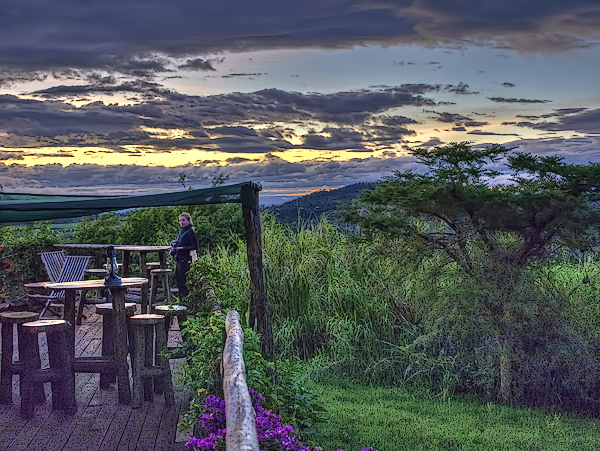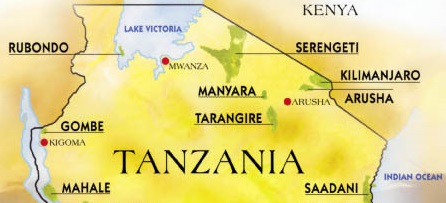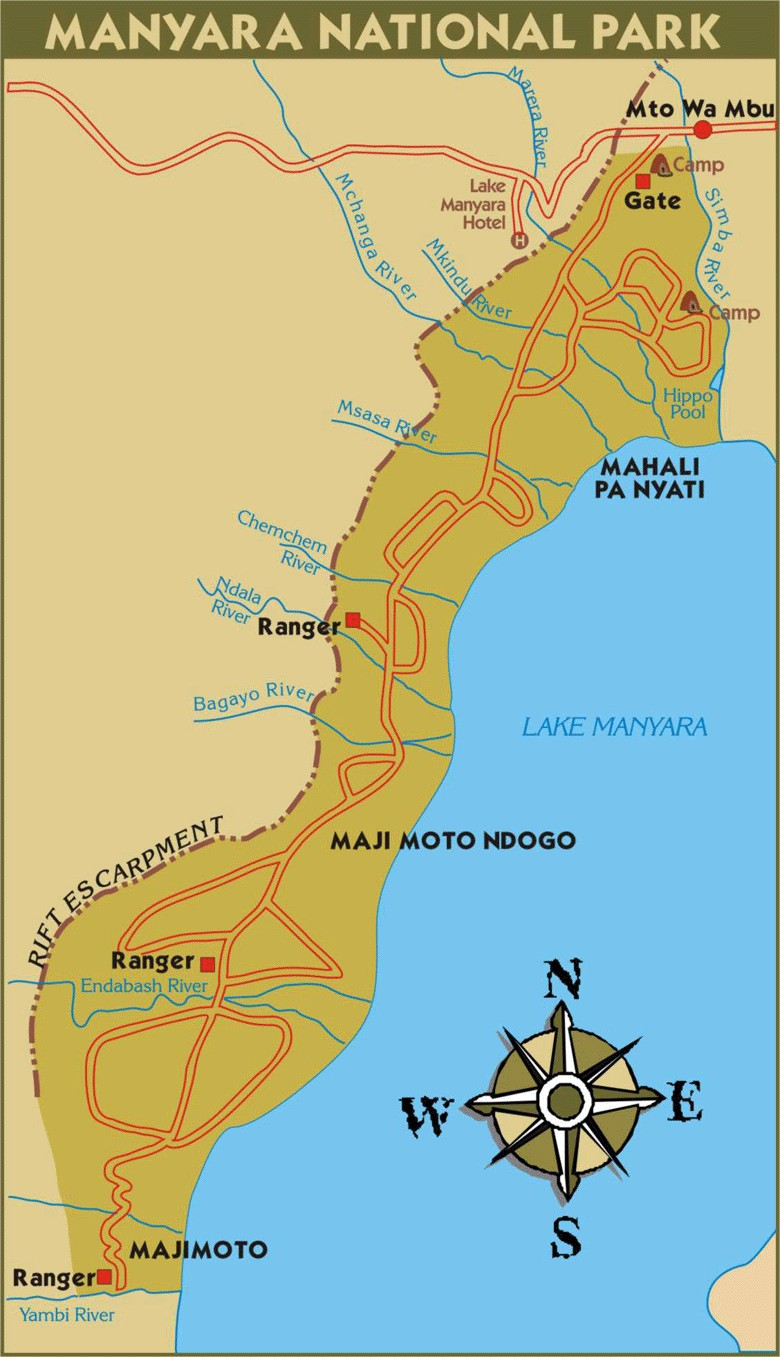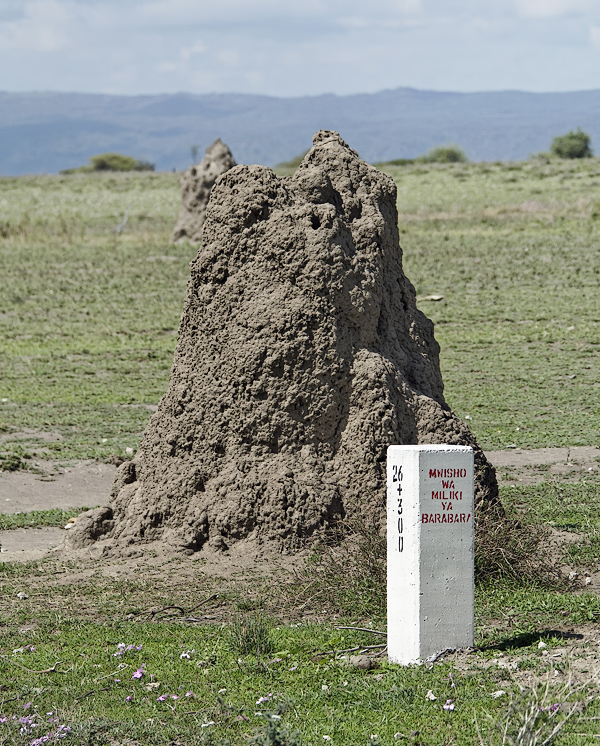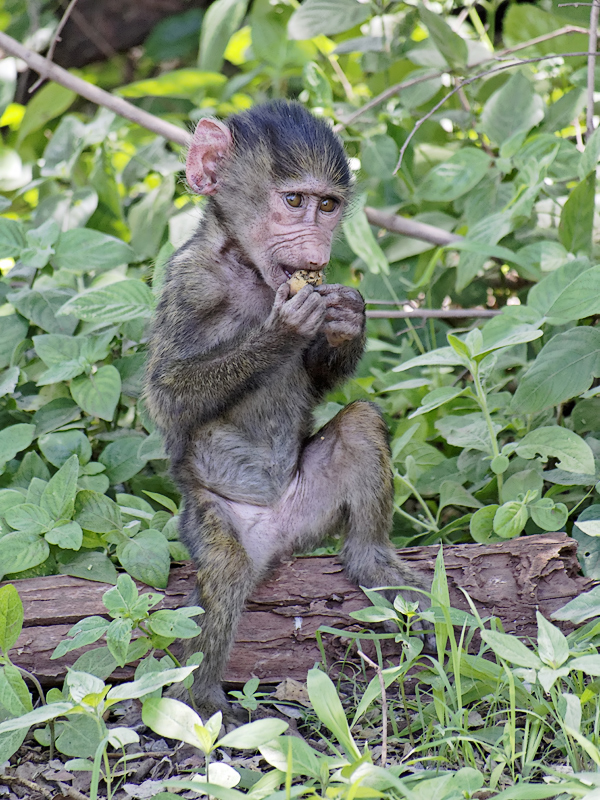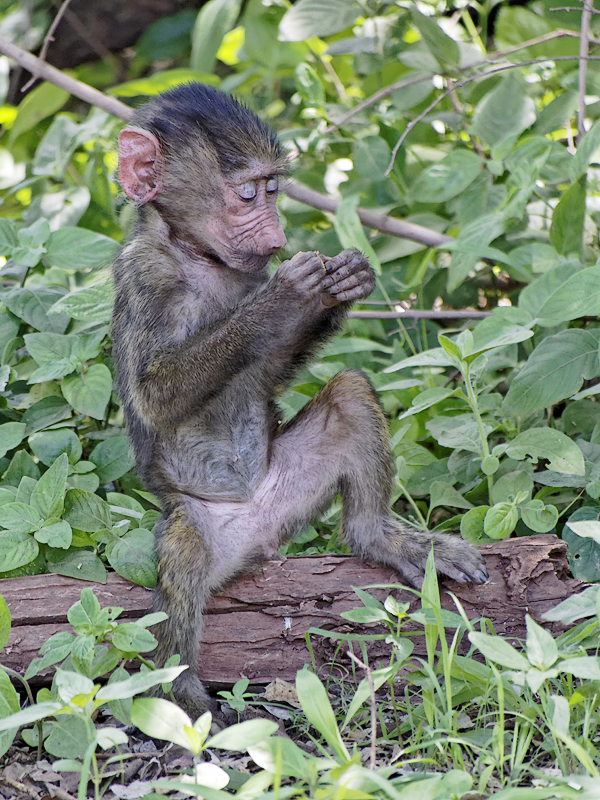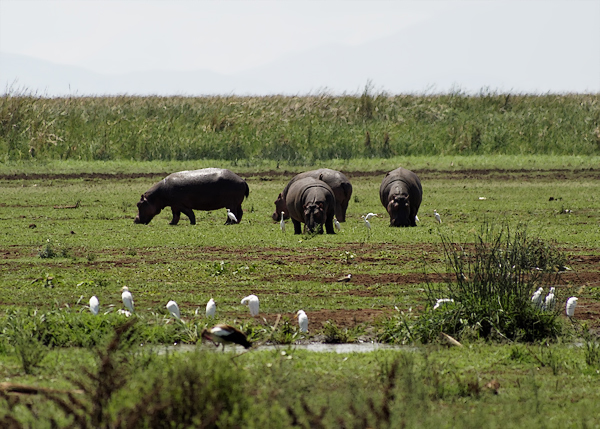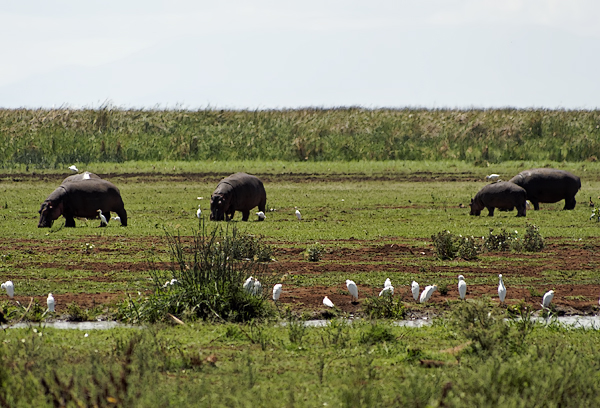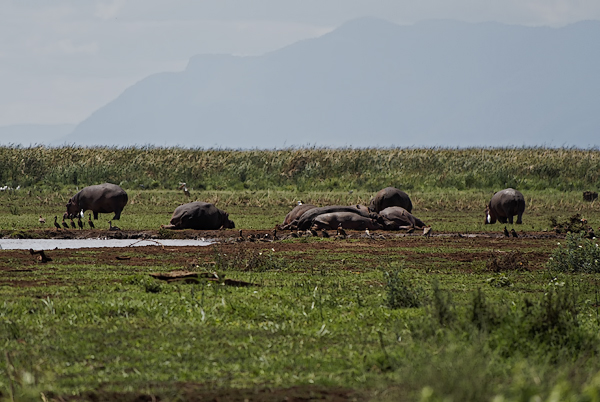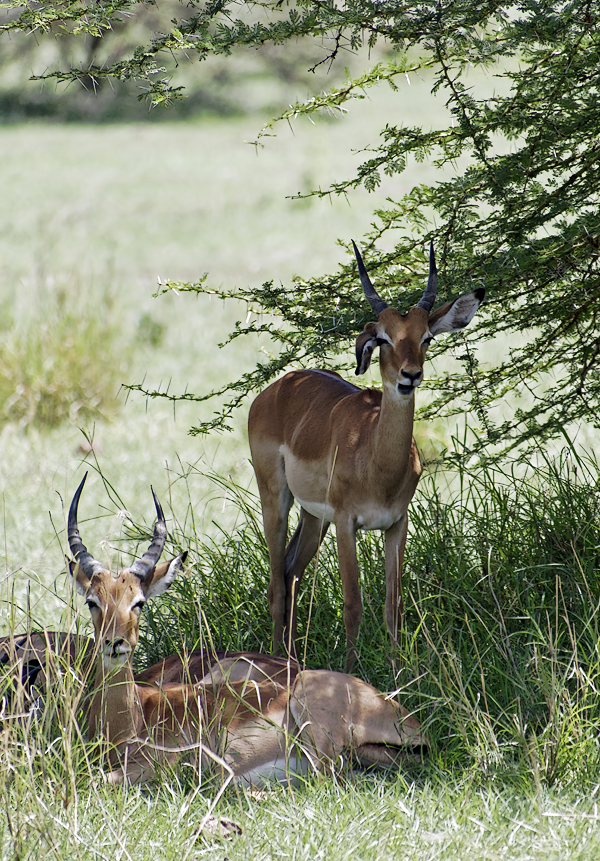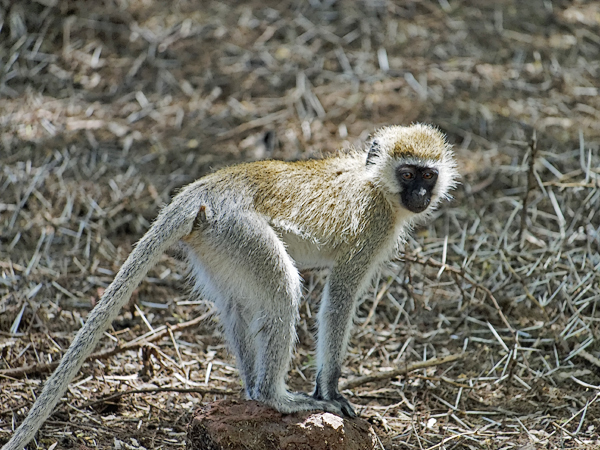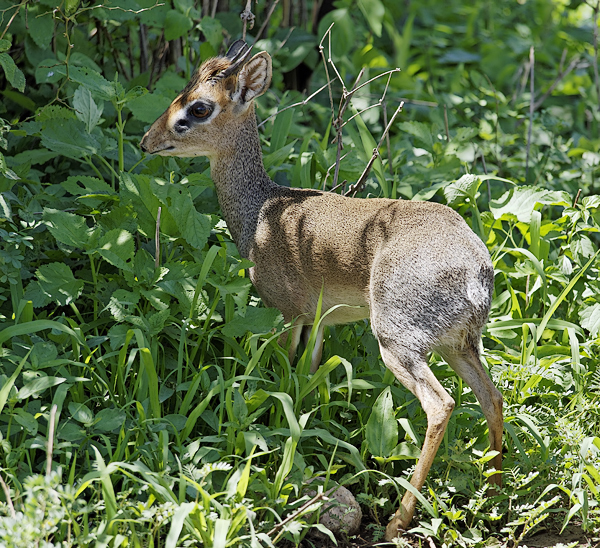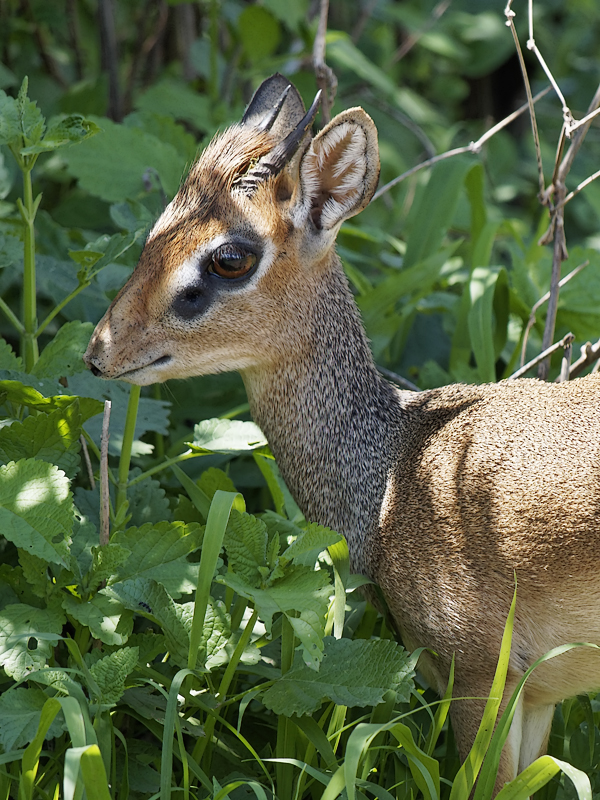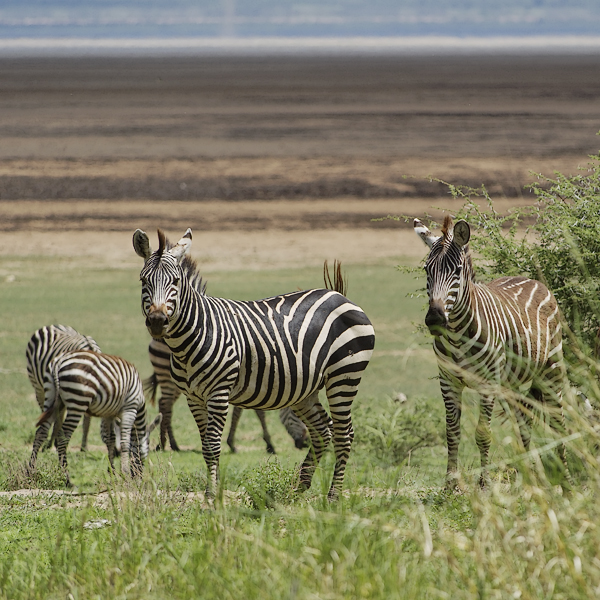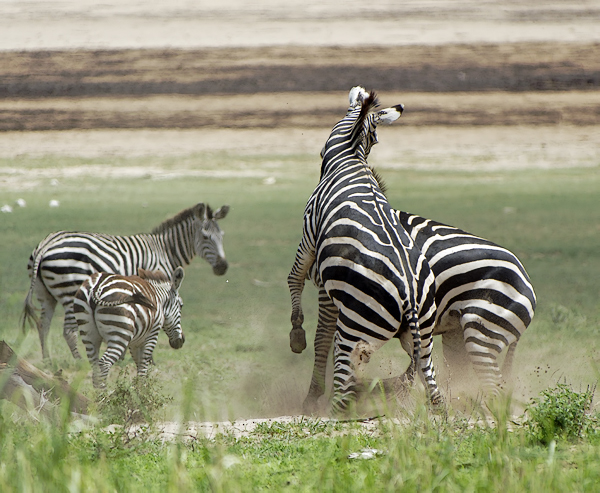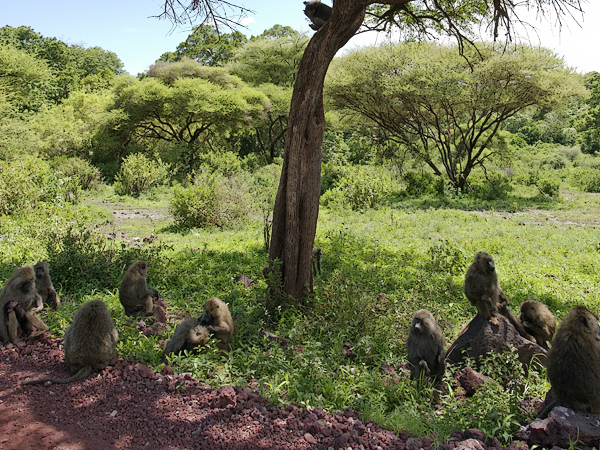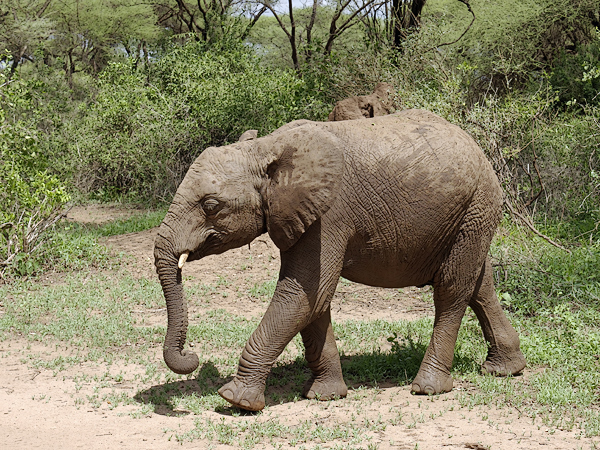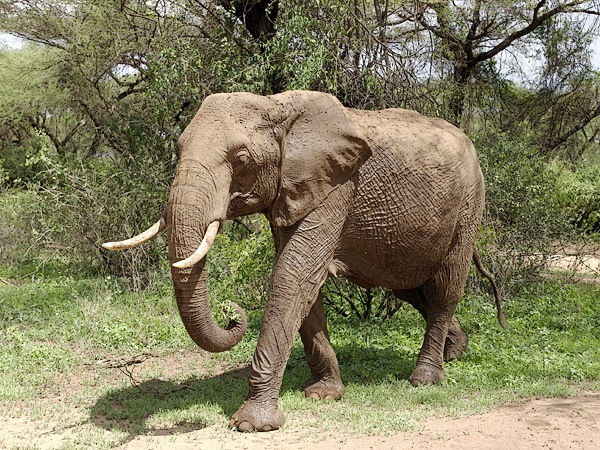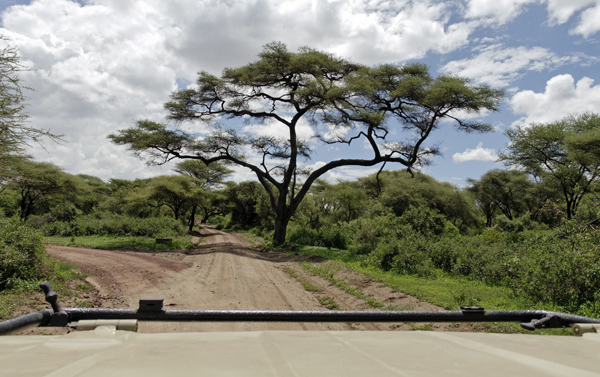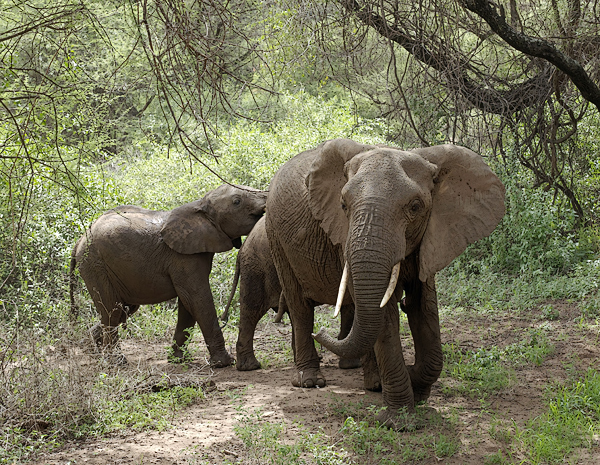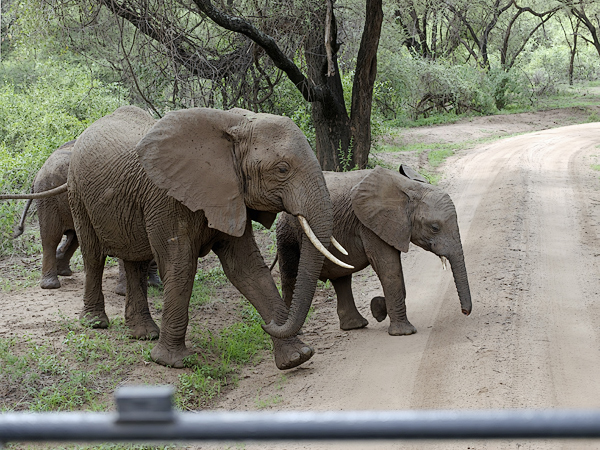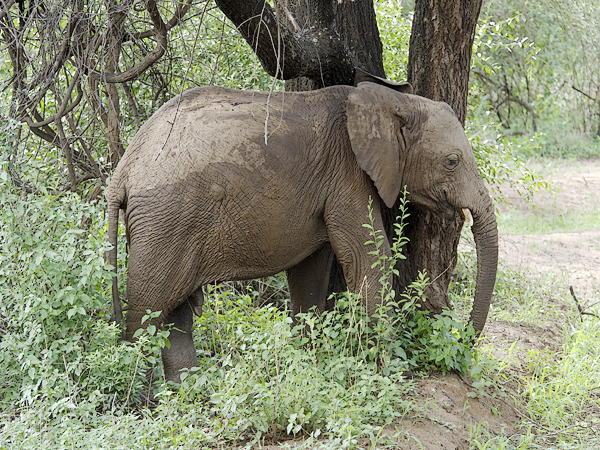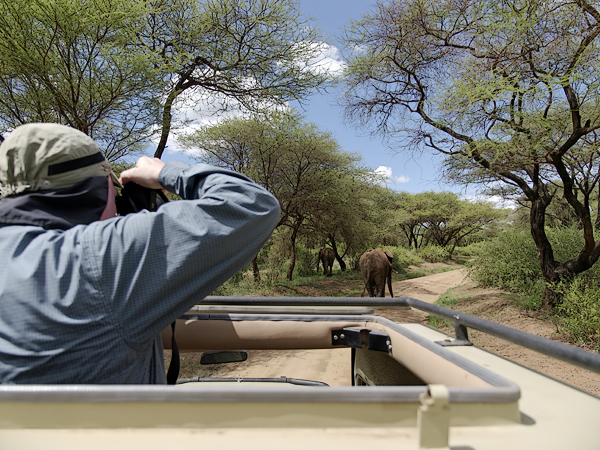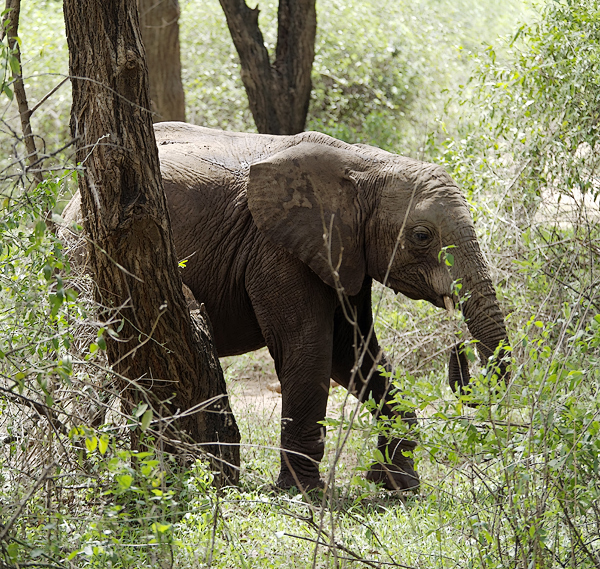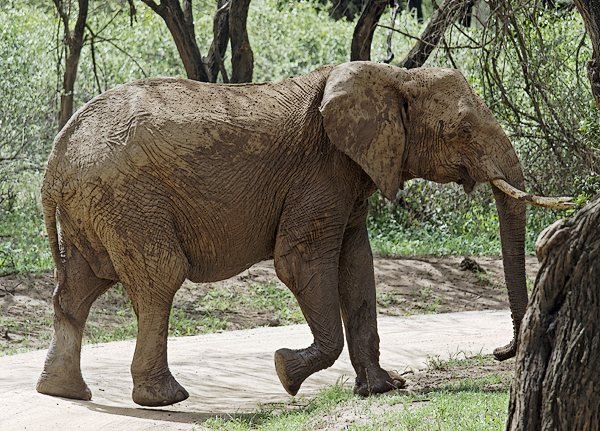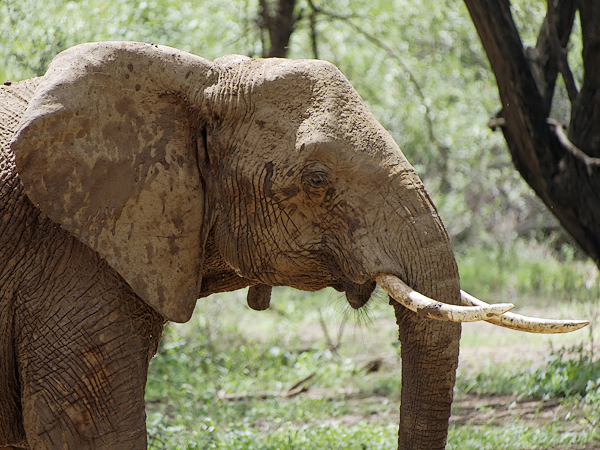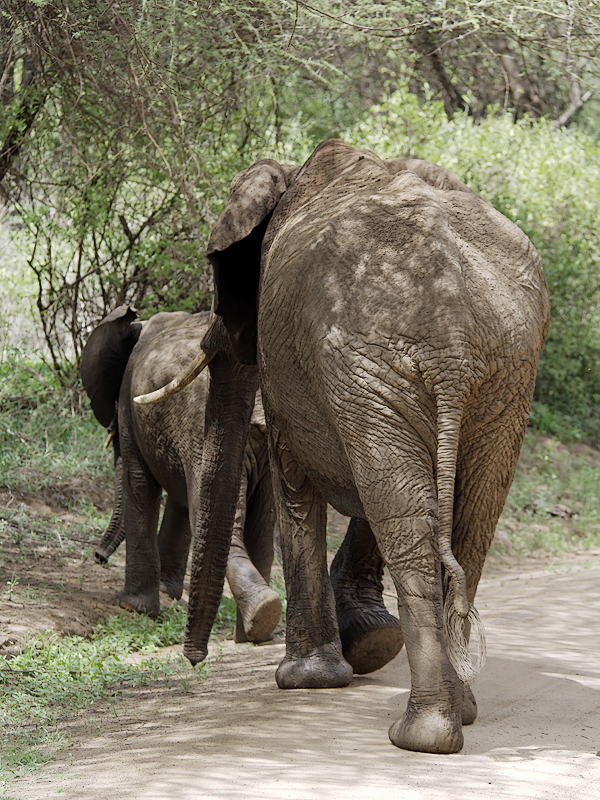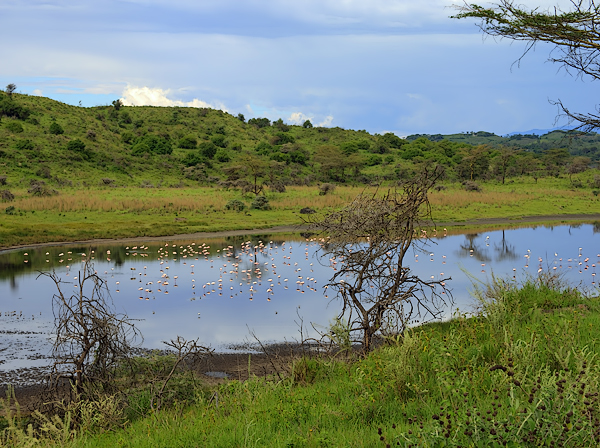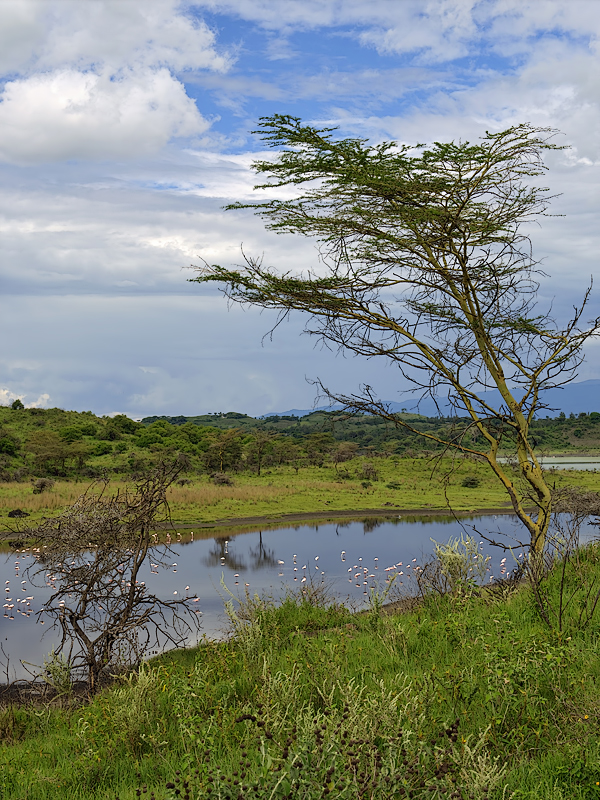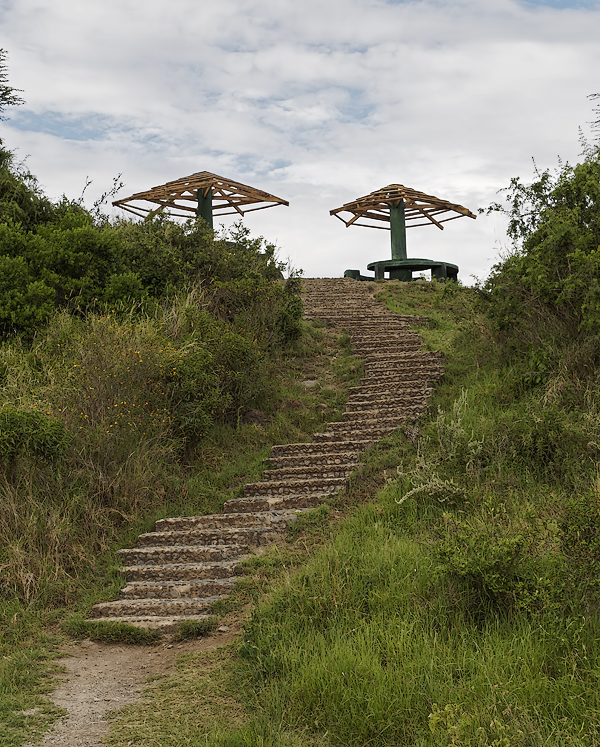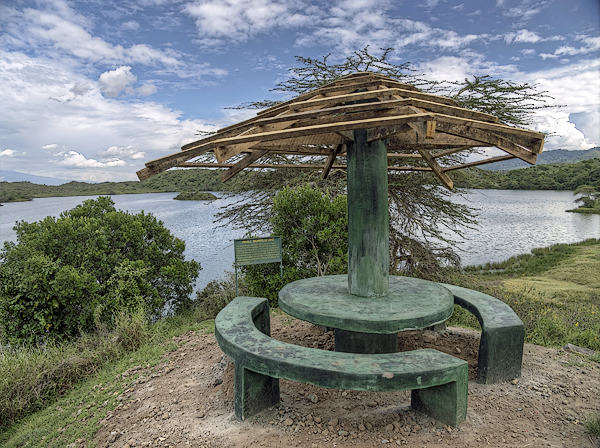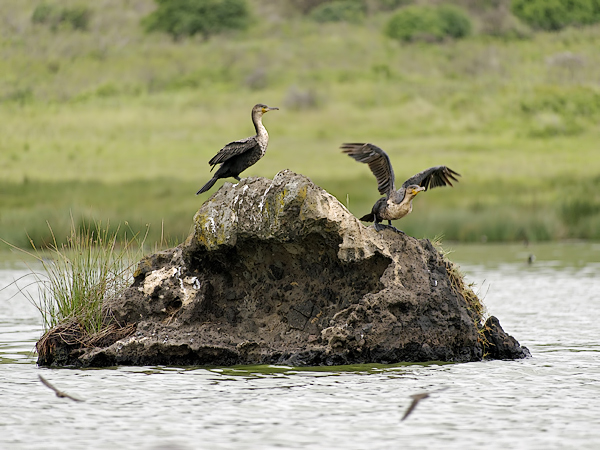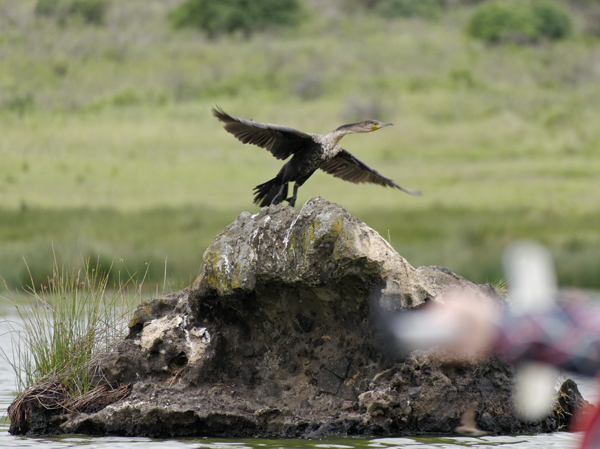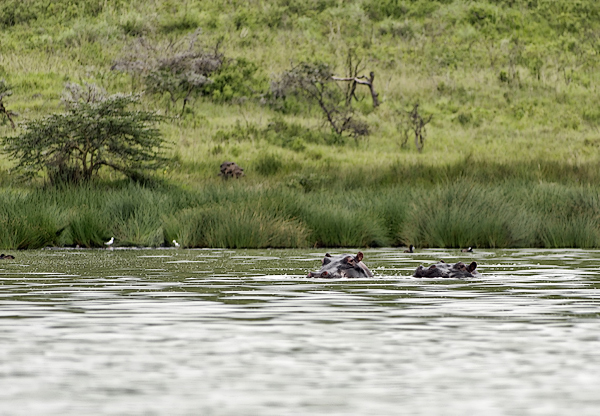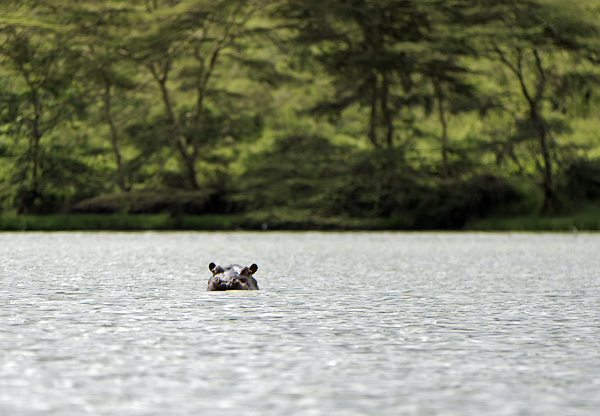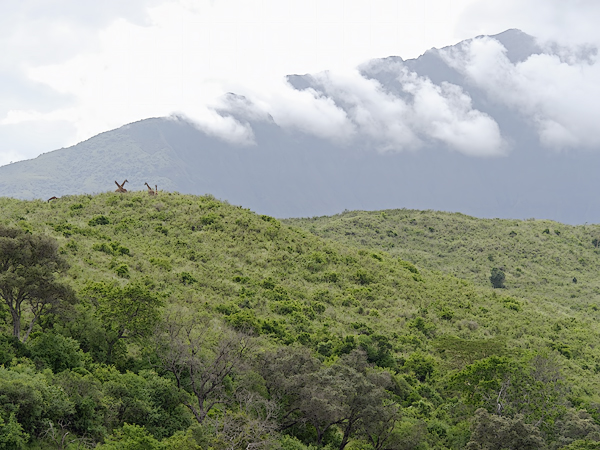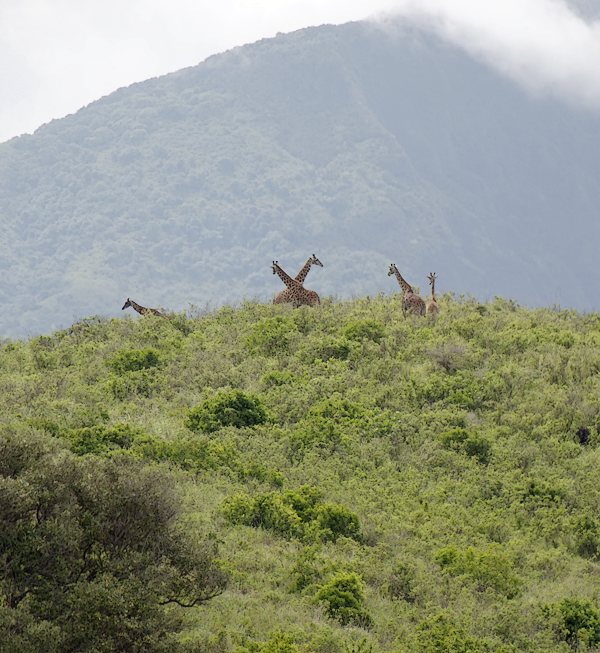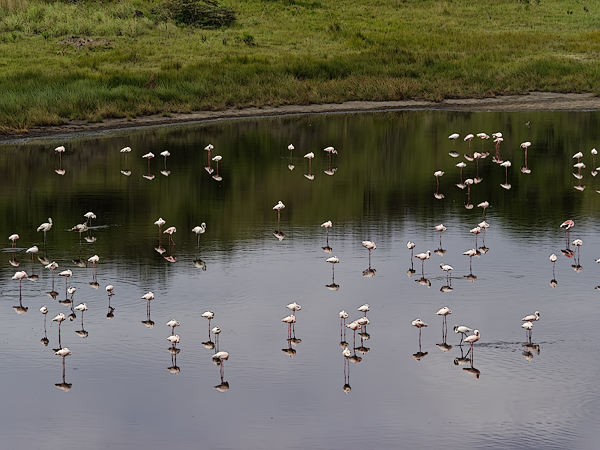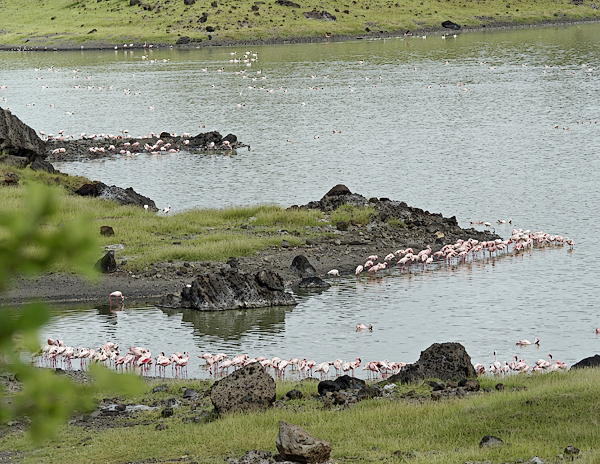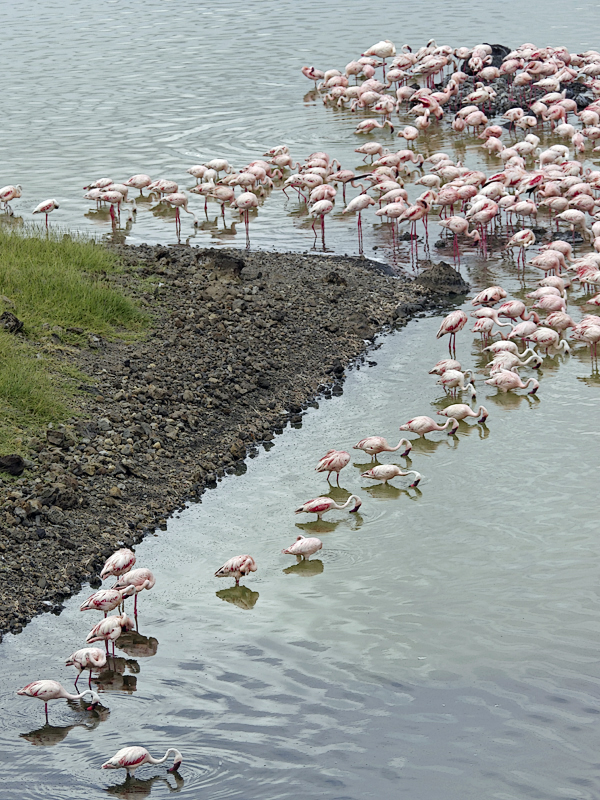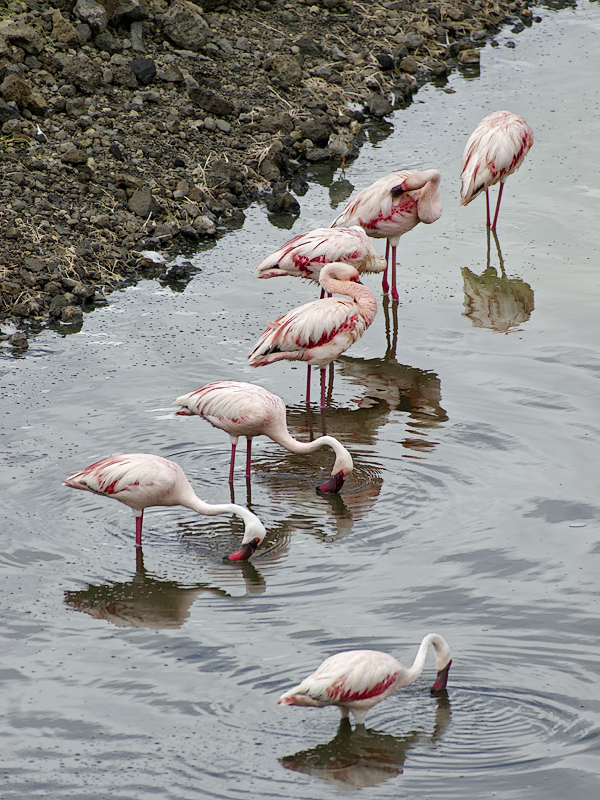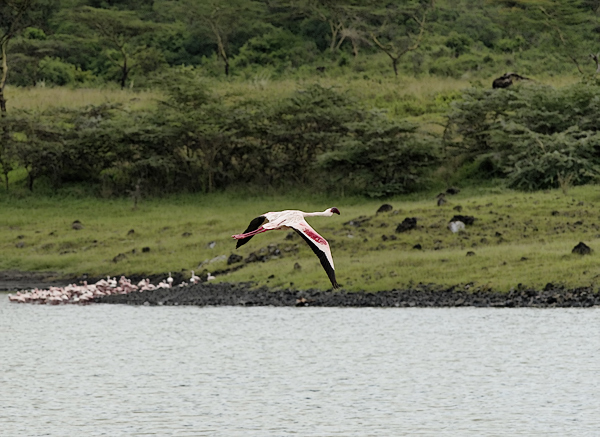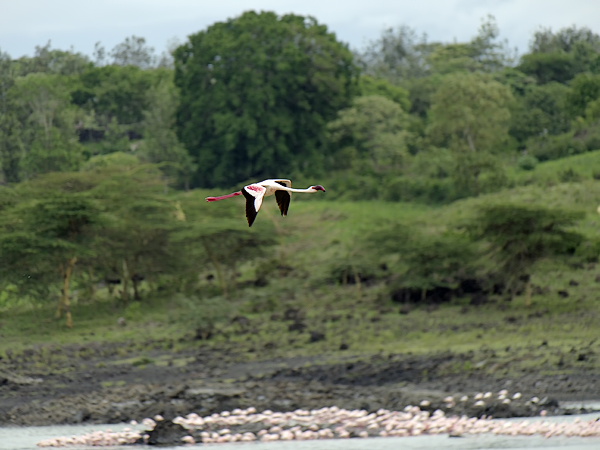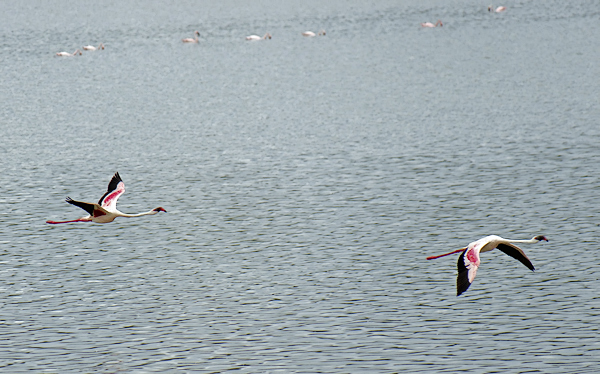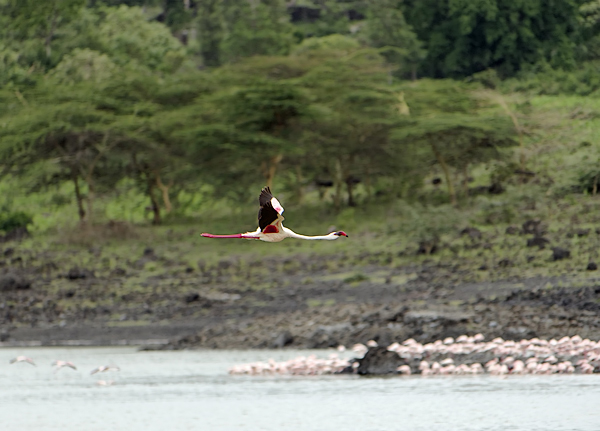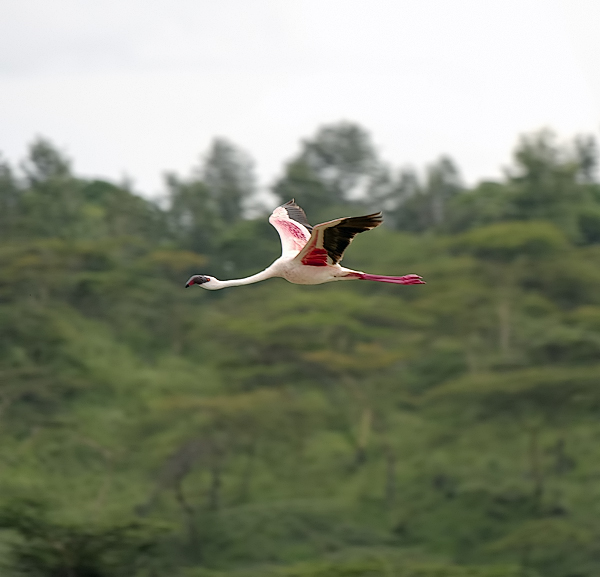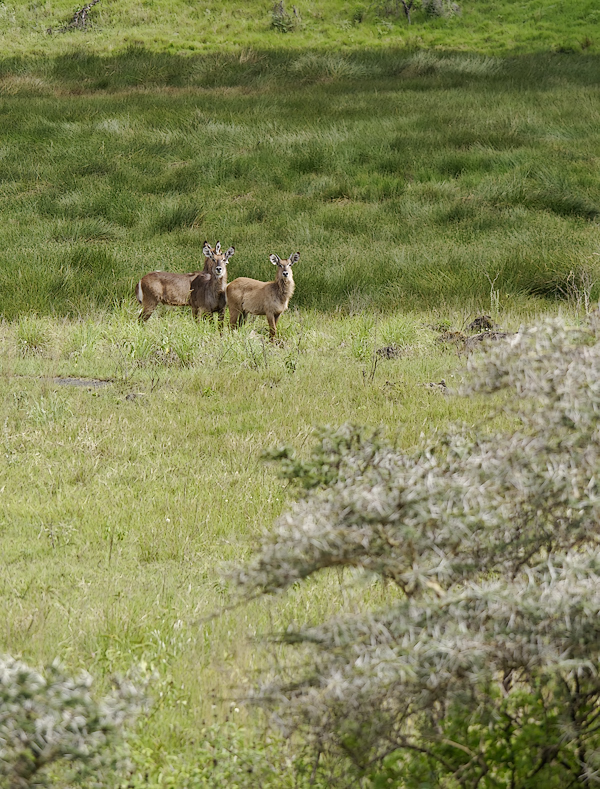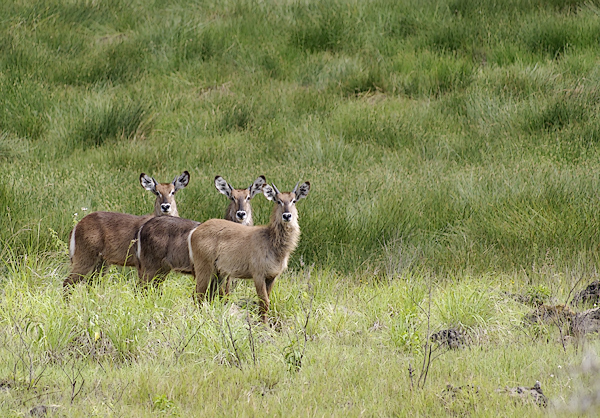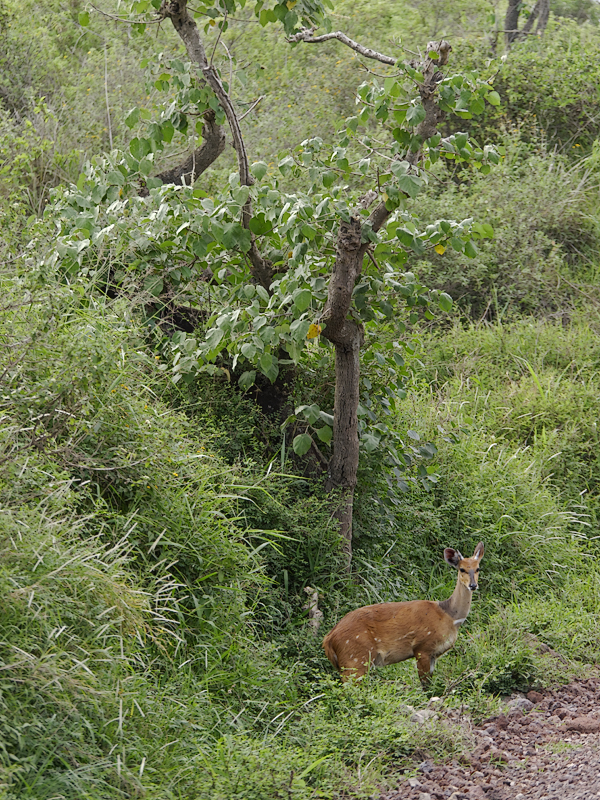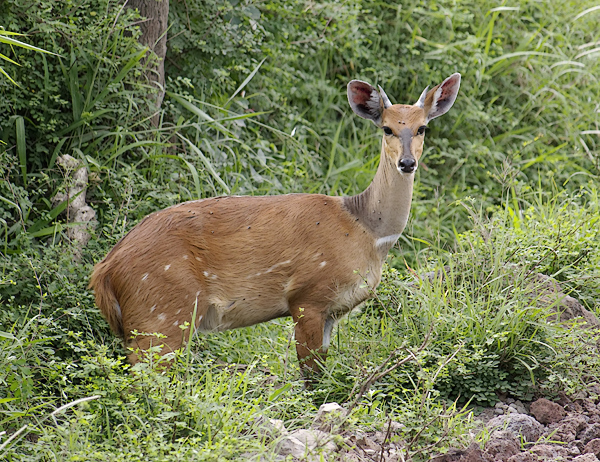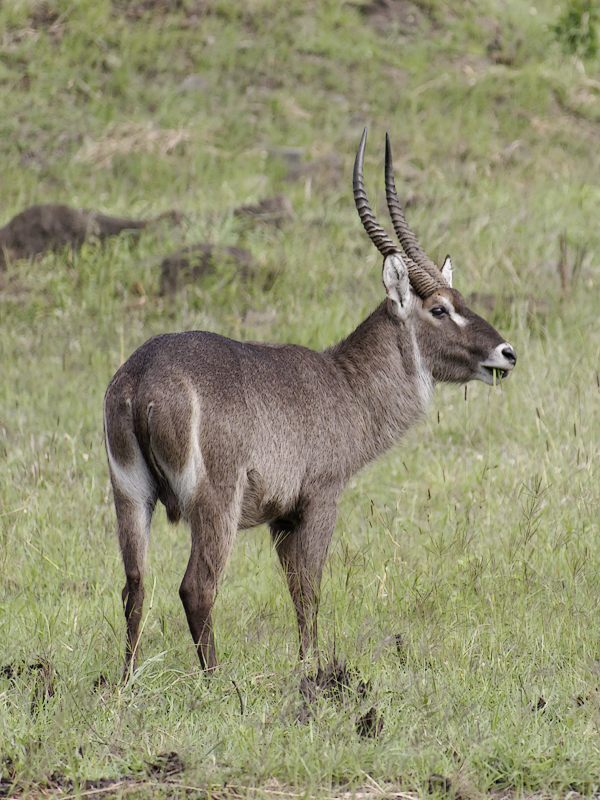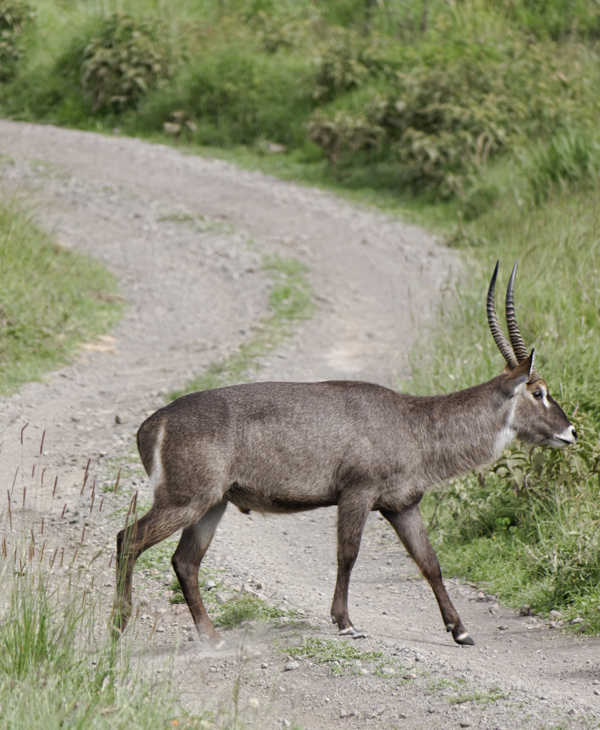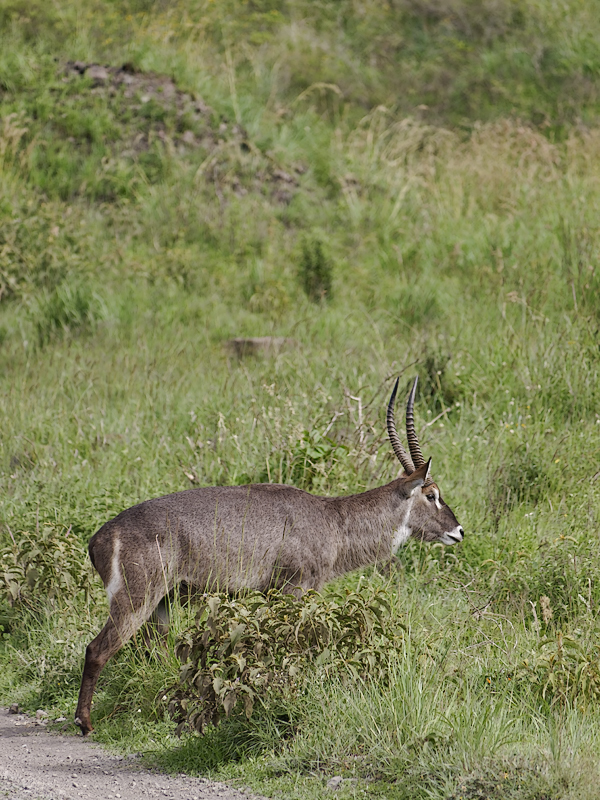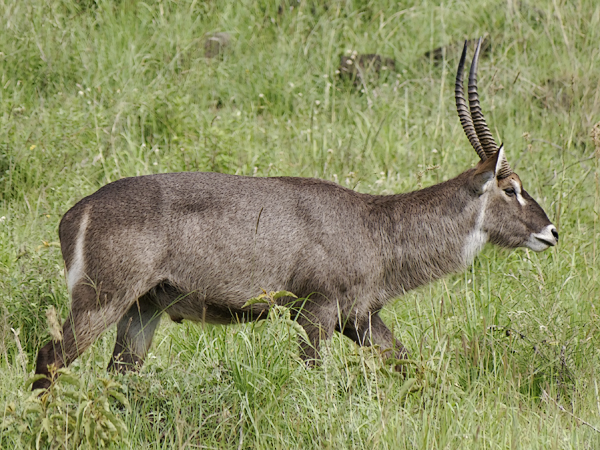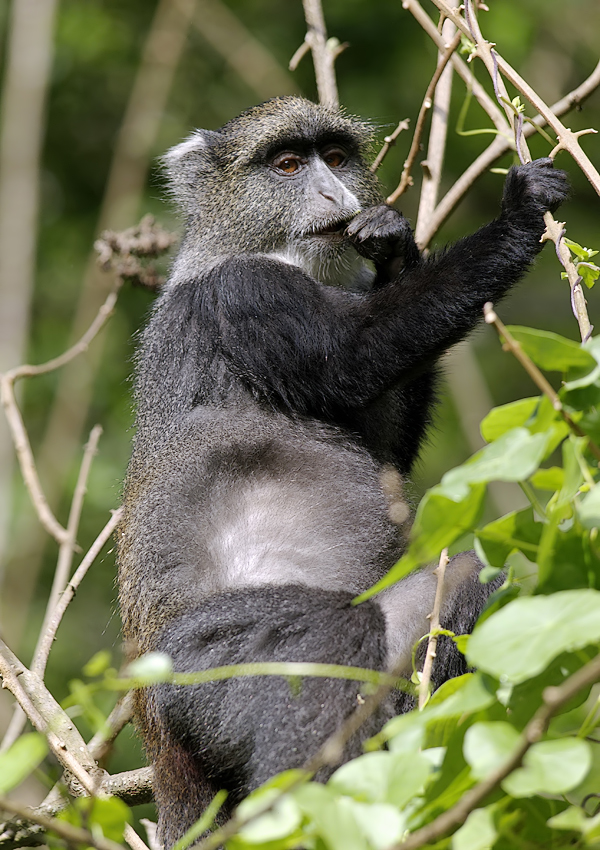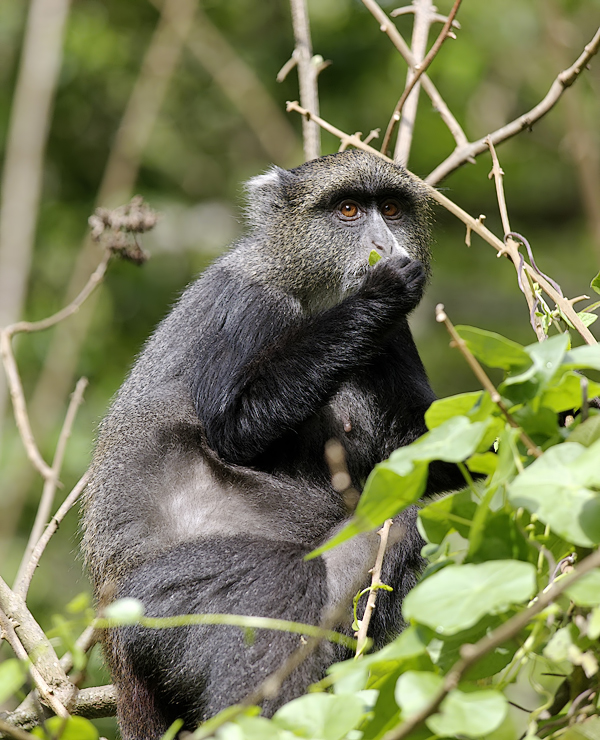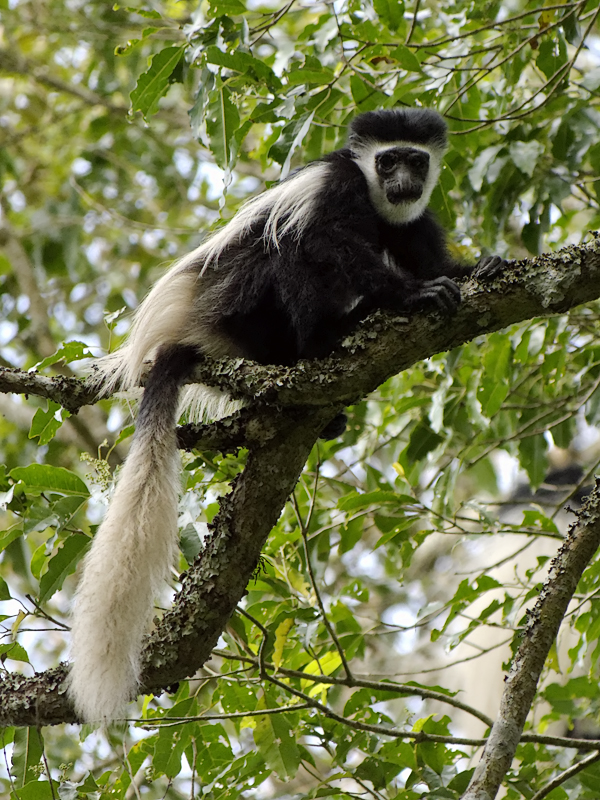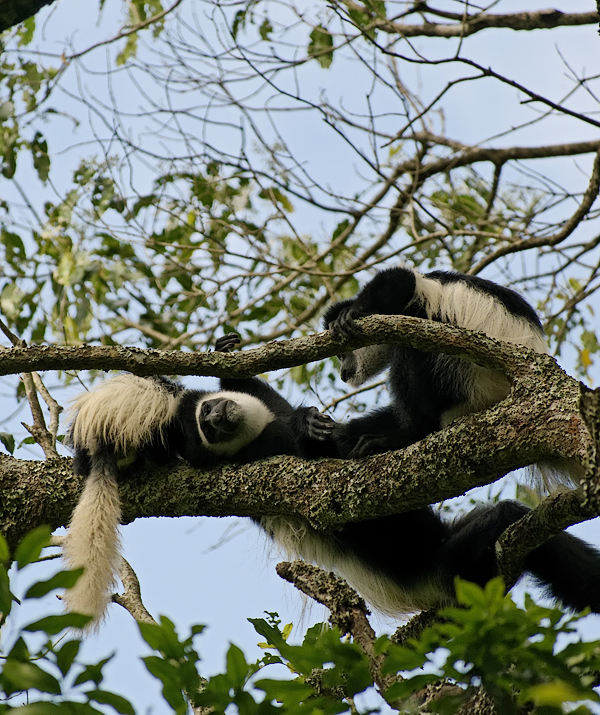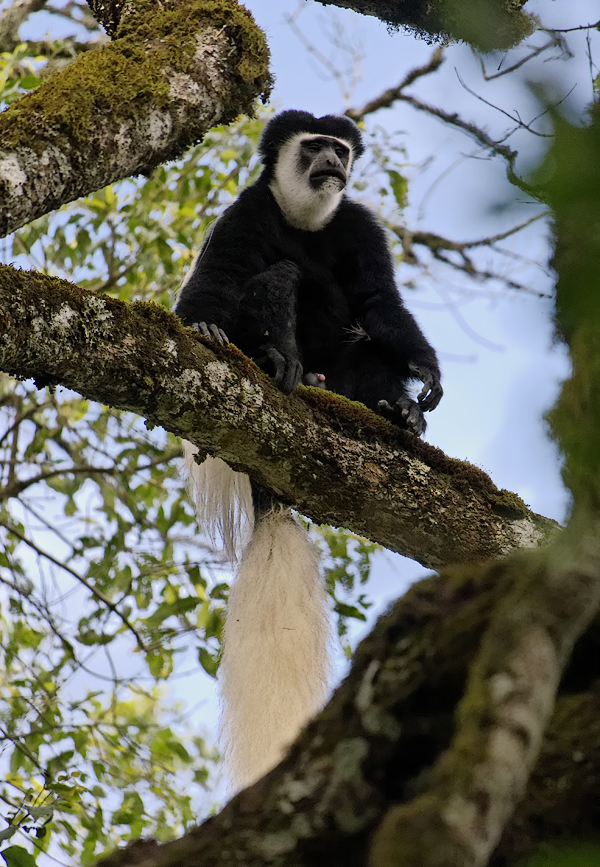Tanzania Holiday 15: Drive to Camp for Serengeti Game Drives
 Sunday, September 29, 2013 at 0:24
Sunday, September 29, 2013 at 0:24 The morning after our final day in walking safari camp, we loaded the Land Cruiser and headed toward the next camp.
This time we would be in a similar mobile tent camp, but further south in Central Serengeti for a series of game drives.
We would drive today from our site on the Orangi river, past the Seronera airstrip, then head west into the kopjes:
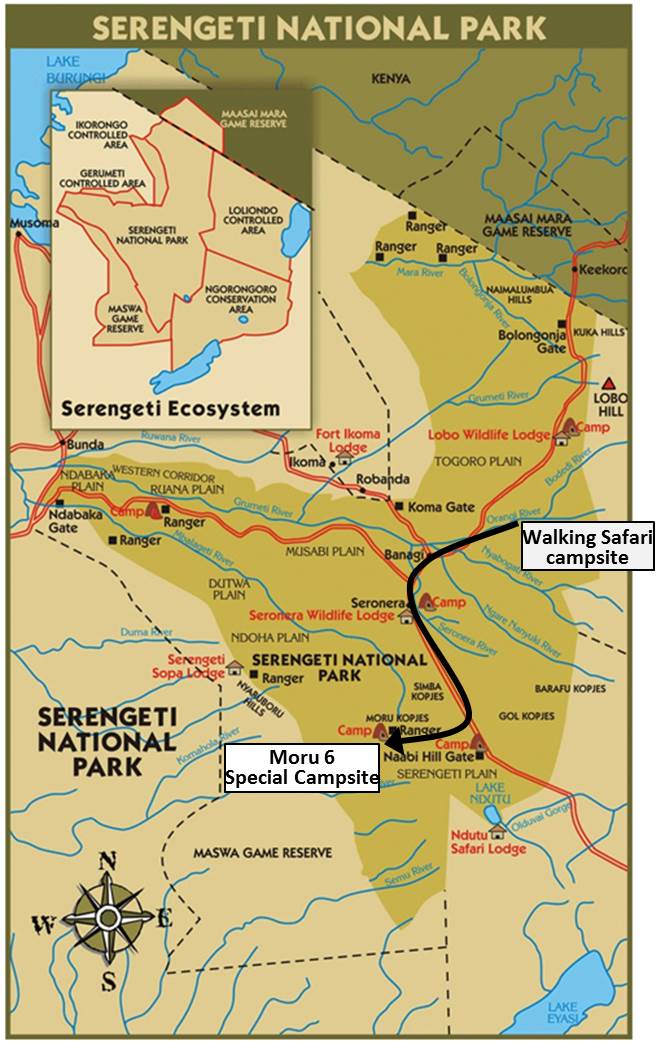 Source: www.tanzaniawildlifesafaris.com
Source: www.tanzaniawildlifesafaris.com
Not long after starting out, we got a photo of one of the "Little Five" - the leopard tortoise!
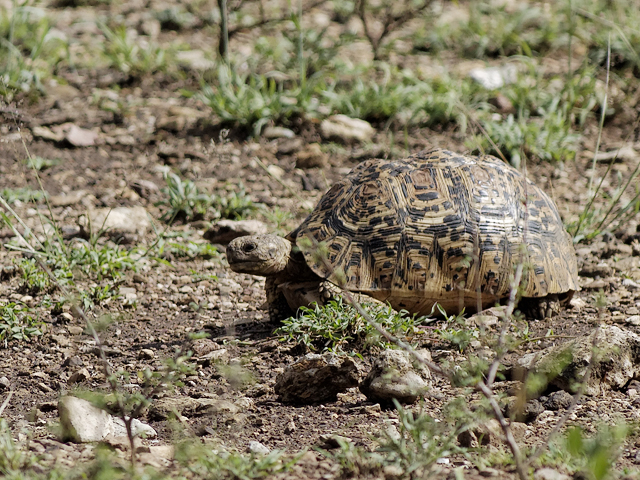
30 minutes later, we pulled off to a well-known hippo pool. There was already one jeep in the prime viewing spot:
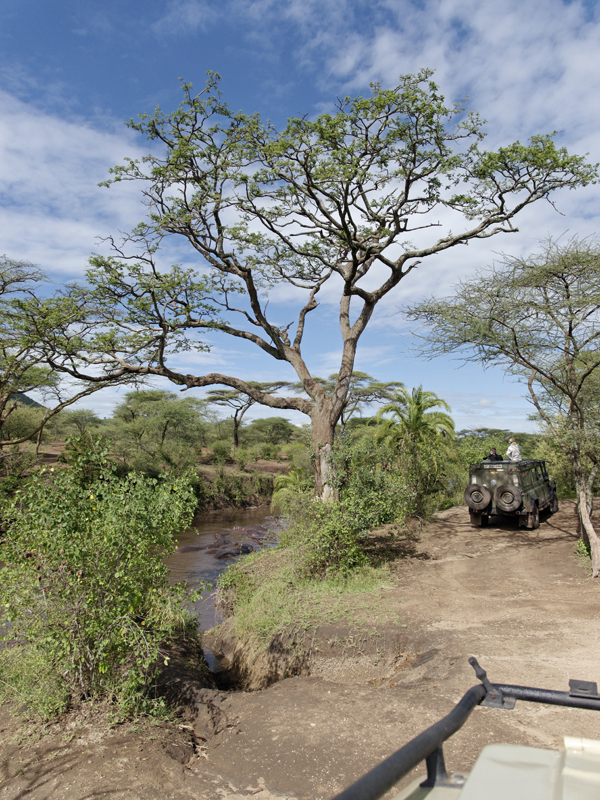
We took some photos from our "on deck" position, and then pulled forward when the first Land Cruiser left.
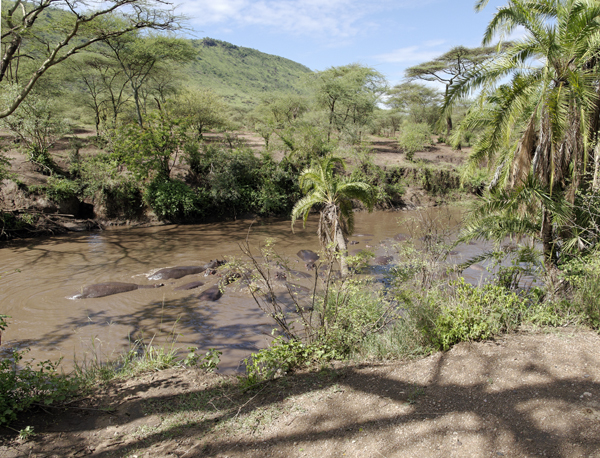
We had seen hippos from afar in prior parks, but this was our first relatively-close look at the "river horses":
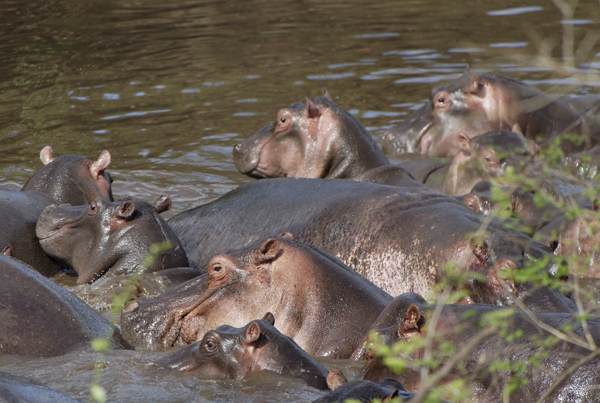
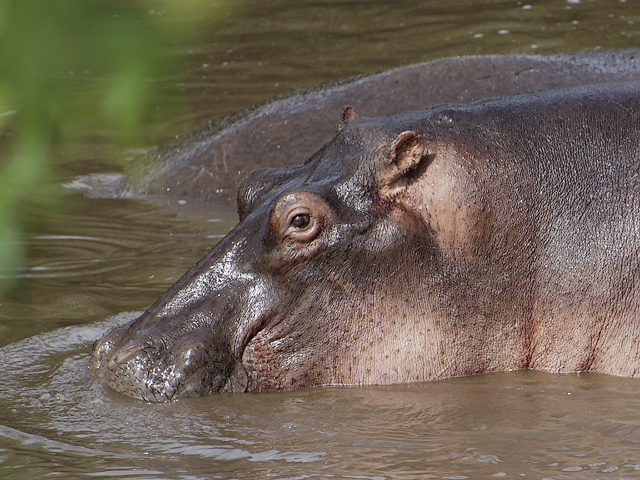
Most of the herd (or pod) were clustered together, with one large male noisily keeping order. A few others were a bit apart, on the far bank or further up the pond, but all eventually waded down and joined the main group:
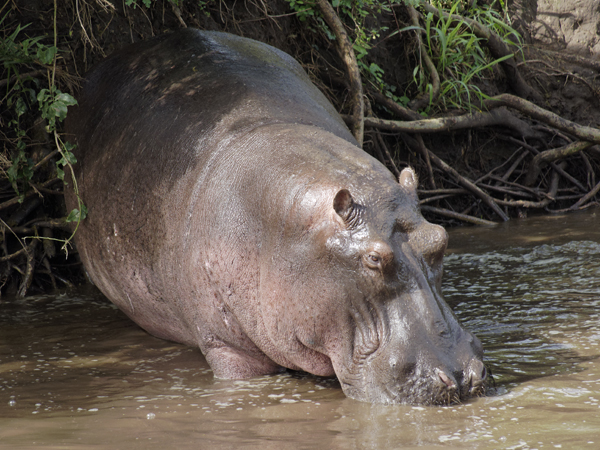
On this one's hide, you can see the scars from fighting/mating or other interactions with fellow hippos:
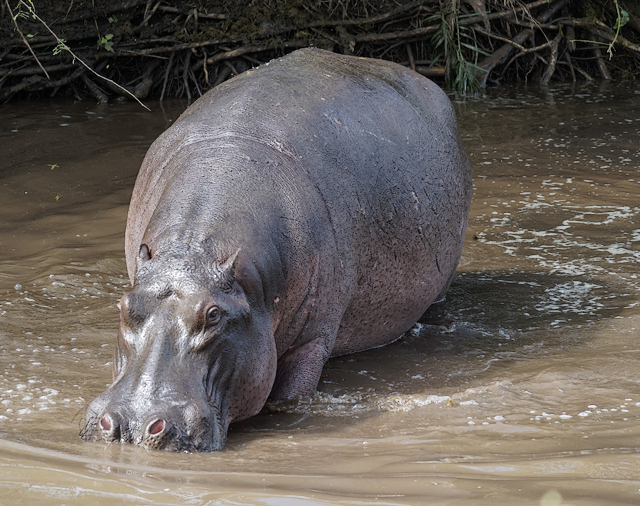
Hippos can't keep themselves cool, so they stay in the water and splash themselves using their ears. Some float up and down to breathe, but others like the one below prefer the technique of resting their head on someone else:
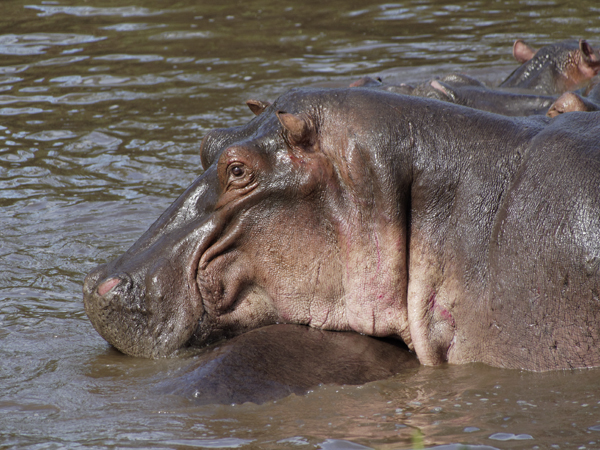
This baby had mom nearby to rest on. Mom would give her a lift every once in a while:
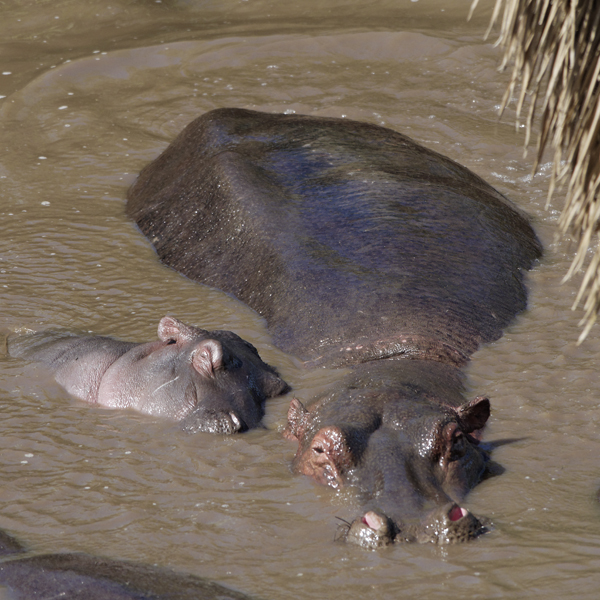
Yes, this was cute!
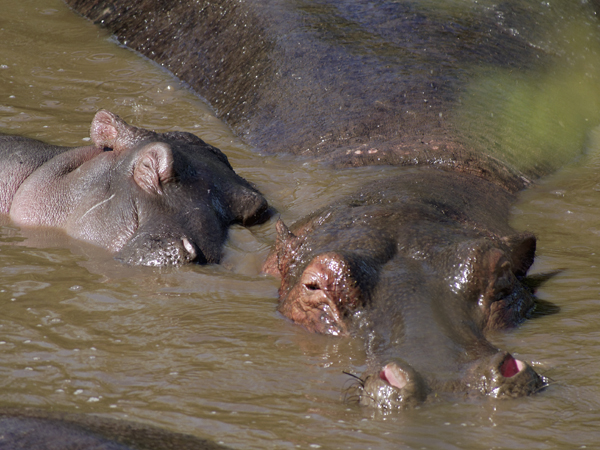
Every once in a while, one hippo would emerge farther out of the water for a nice photo:
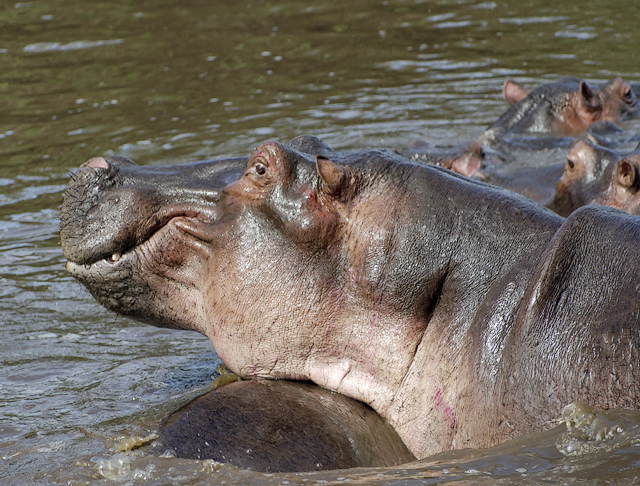
After maybe 30 minutes at the hippo pool, we got back on the main road:
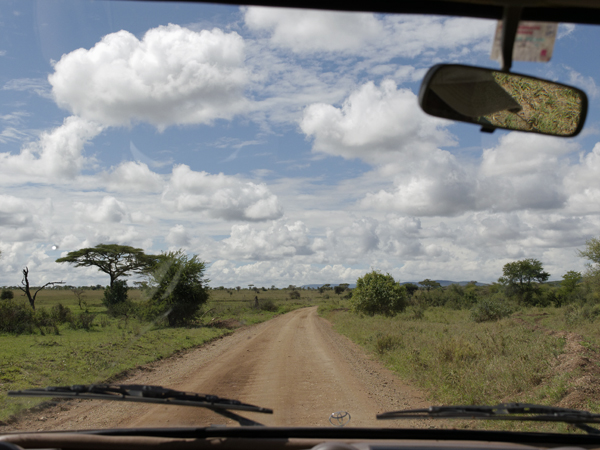
We stopped briefly at the Seronera air strip to drop off our secondary guides. We would head back here in a few days, after the game drives, to end the safari but continue on to the Tanzanian coast part of our honeymoon!
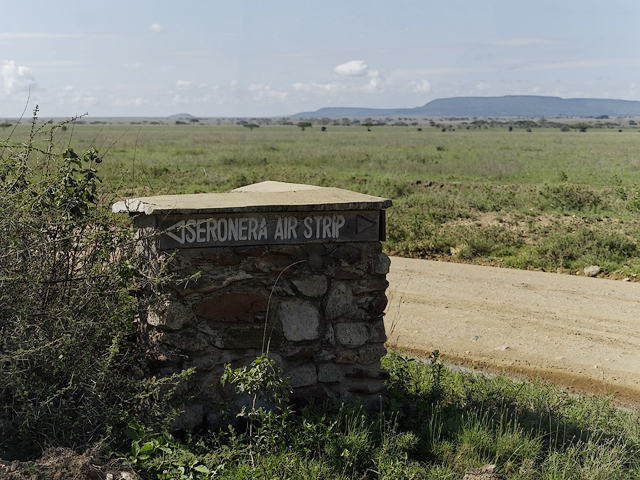
We soon started seeing a lot of impala, many grazing very close to the road:
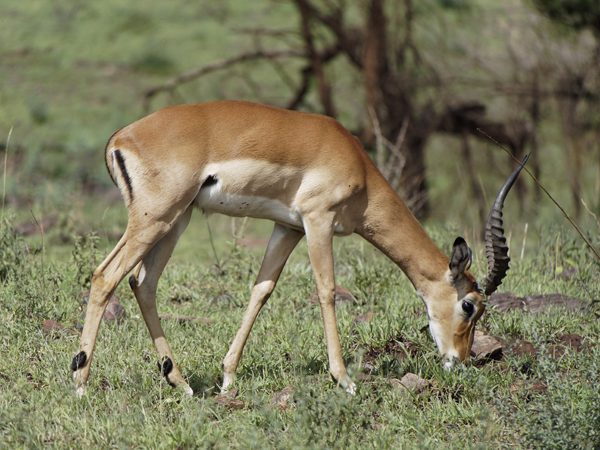
We spotted a giraffe moving through the trees and feeding...
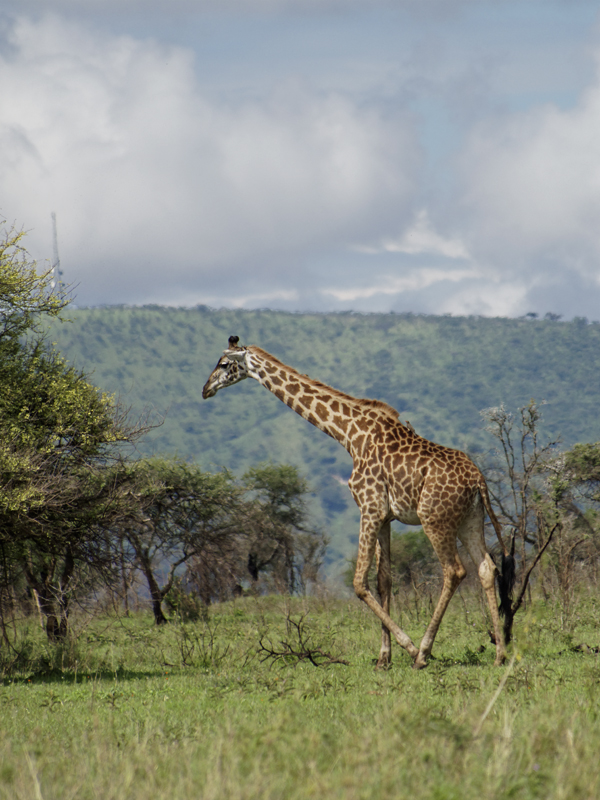
... and it led us to a little giraffe, on the ground. We were hoping the little one would get up, but no luck.
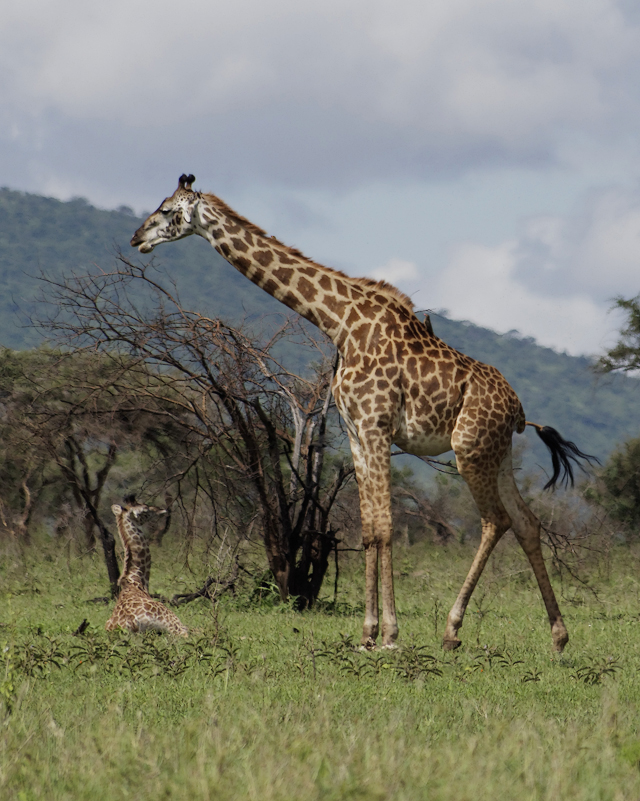
Small water holes, similar to the hippo pond, were scattered throughout the landscape:
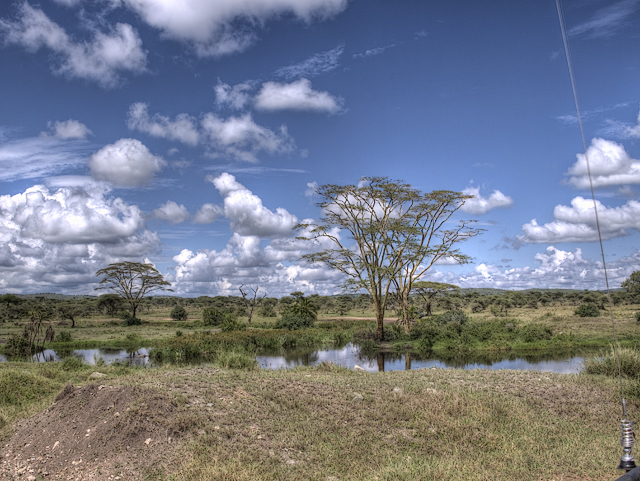 Note: above photo was bracketed and HDR/tonemapped using Photomatix
Note: above photo was bracketed and HDR/tonemapped using Photomatix
One of the water holes offered us our first glimpse of crocodiles!
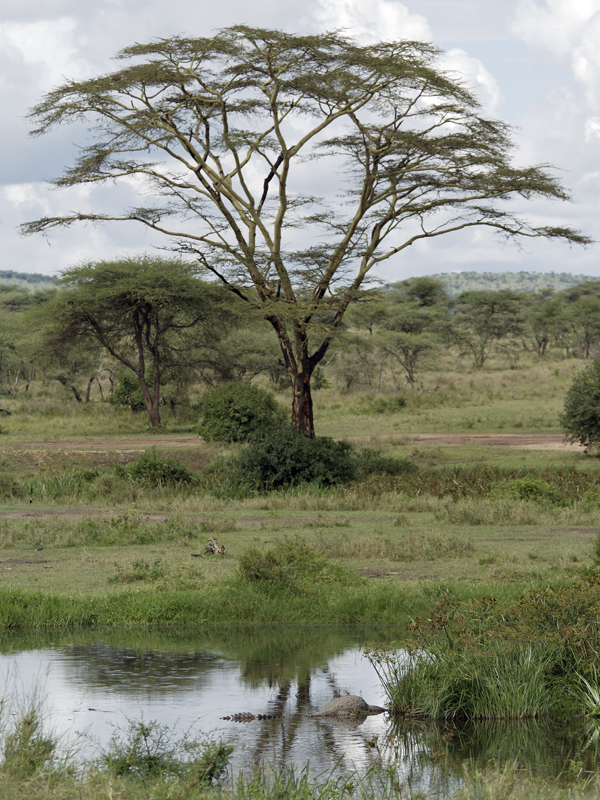
Throughout the trip, we never got a better look than this -- they were just lying in the sun and resting.
(We heard if you're here for the Great Migration, you can really see the crocs in action in the right places.)
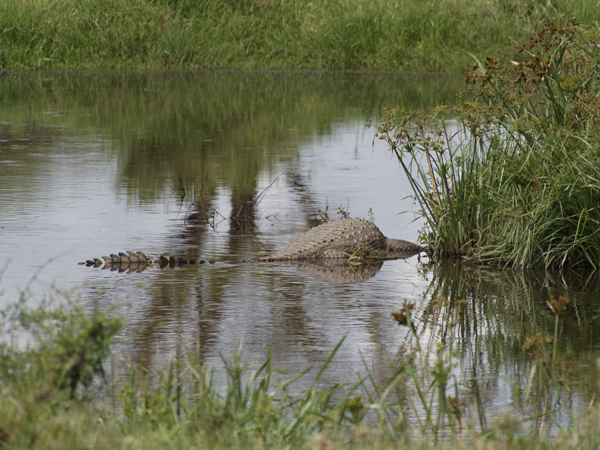
Continuing south through the Park, were were seeing more and more impala:
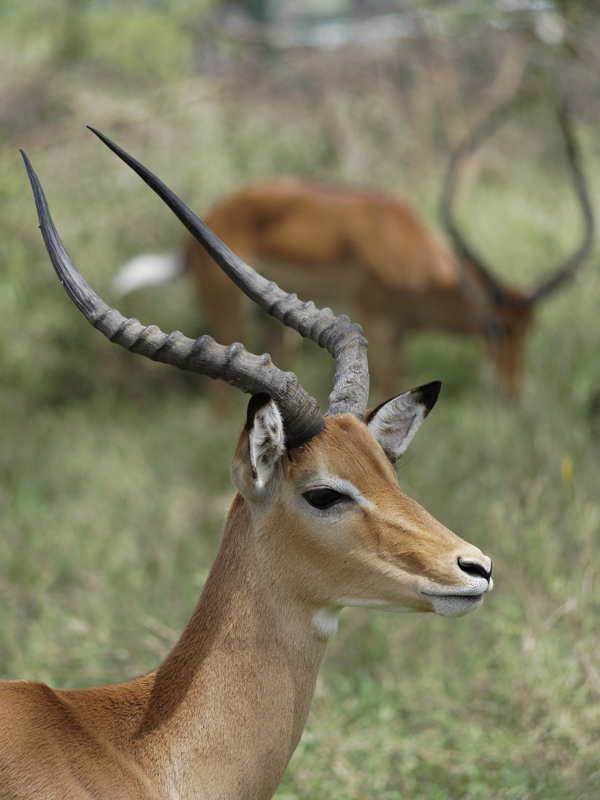
They were skittish, but stayed so close to the road that we could basically get portait photographs of them:
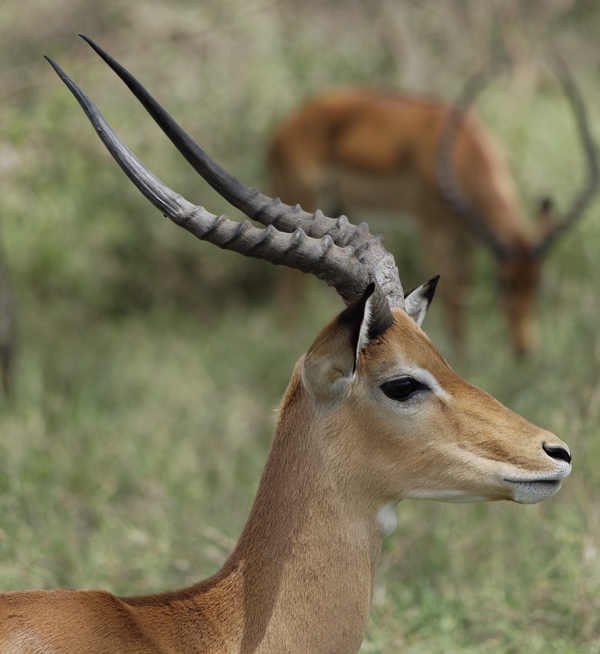
Our guide Prim was an amazing spotter. Here, he found a silverbird for us to photograph:
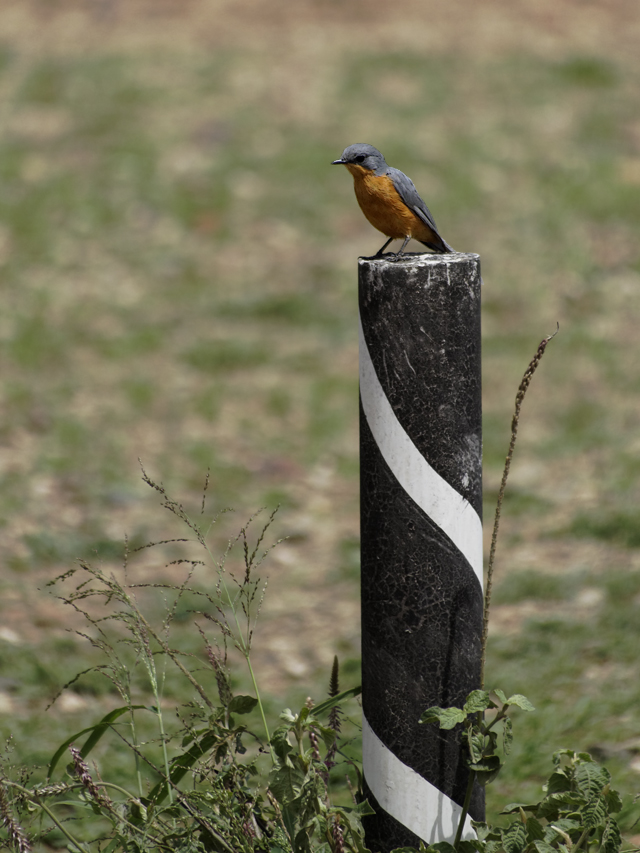
We also found a rufous-tailed weaver in the trees...
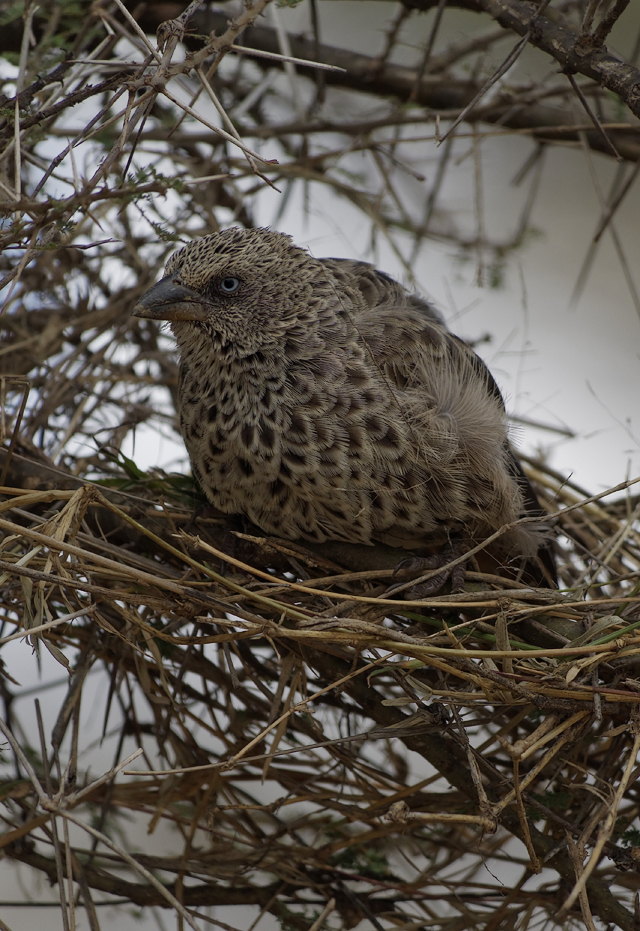
... and a southern masked weaver, in the process of weaving its nest! (entering the nest from the bottom):
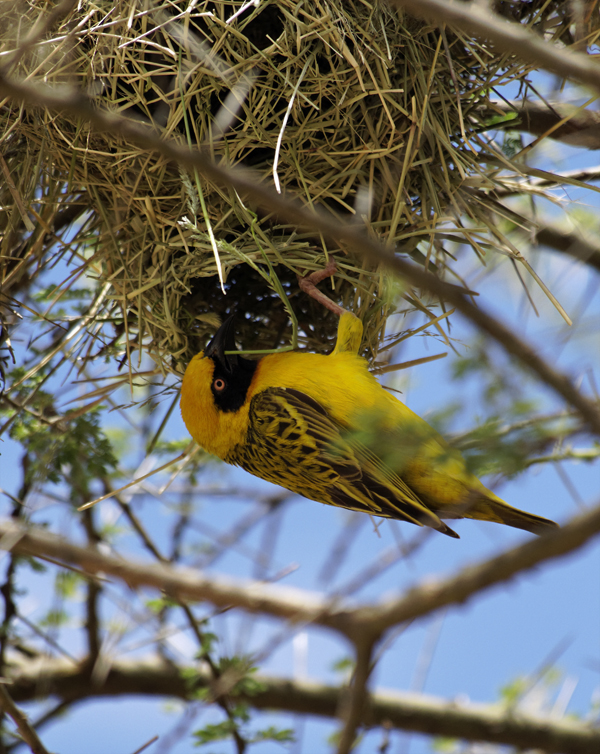
And one more bird that we'd seen before, the superb starling:
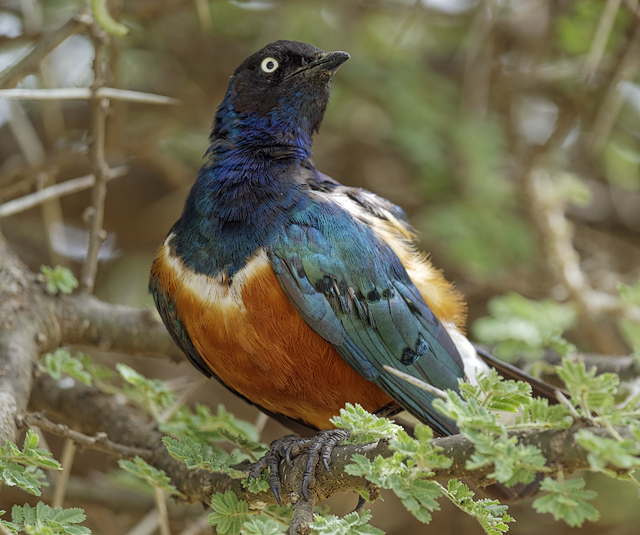
As we left the wilderness area ("low use area") and approached high-use areas, we saw many more Land Cruisers:
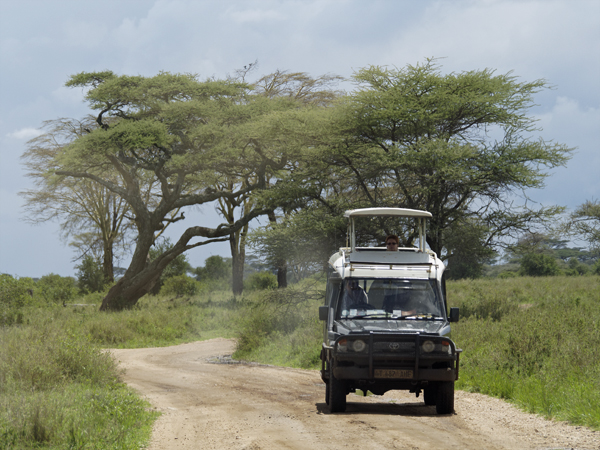
Then, finally! A coupled of stopped jeeps with lots of people staring indicated something interesting was ahead...
It was a young leopard, resting in a tree:
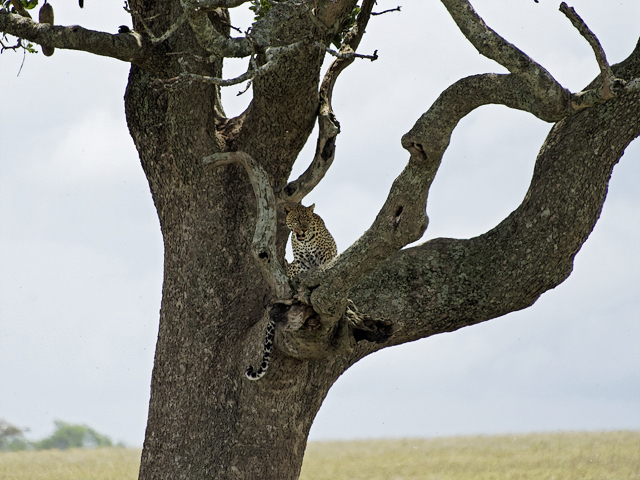
Here is a zoom. Nice!
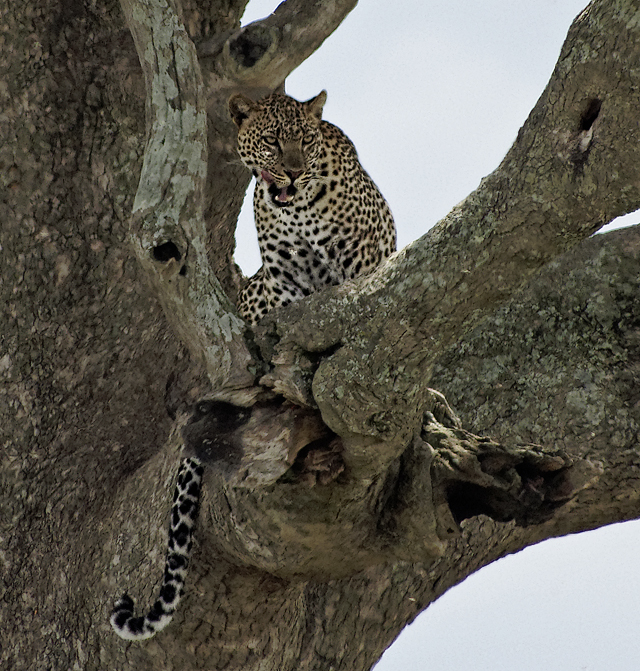
He/she eventually got down, and in the tall grasses we could not see him/her anymore, so everyone moved on:
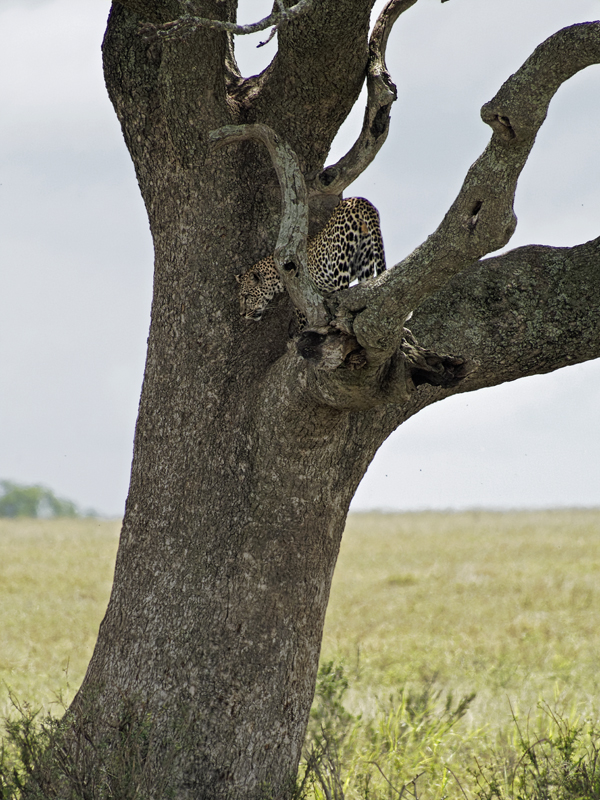
We took another brief pause to photograph a pair of white-backed vultures:
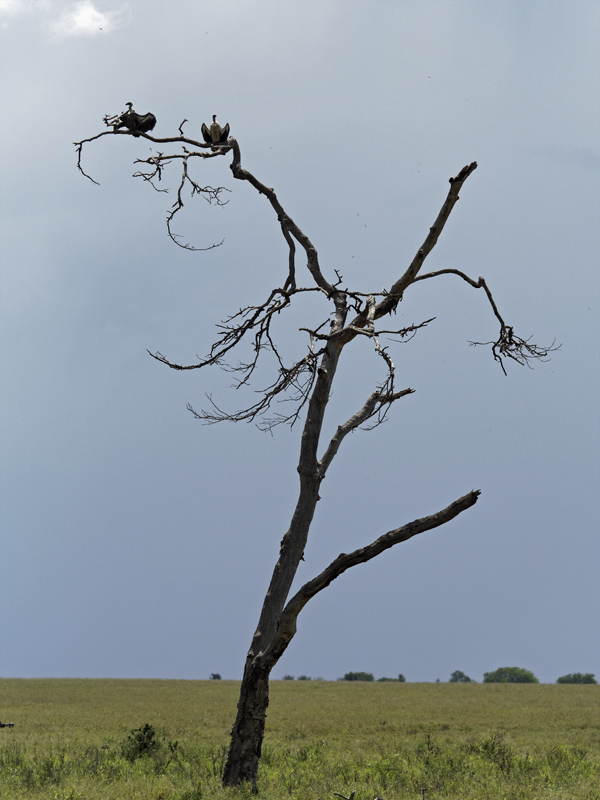
As with the crocodiles, this ironically was the best view we ever got of vultures. They were quite far away, and we needed all of the 600mm equivalent zoom lens to get a shot (therefore a bit fuzzy and non-contrasty, but OK):
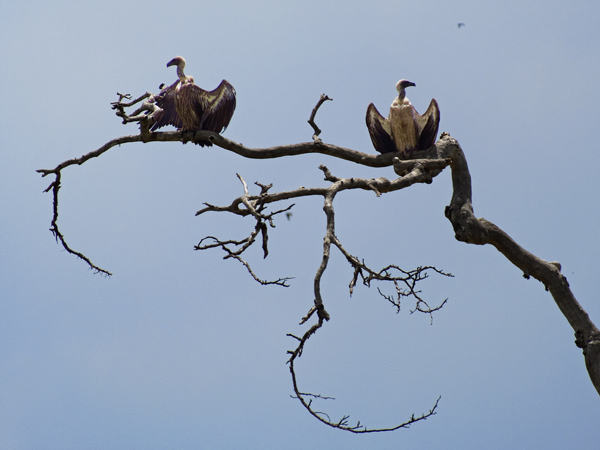
We took a break for lunch in a small area with a few picnic tables. We finished lunch in the jeep due to the rain:
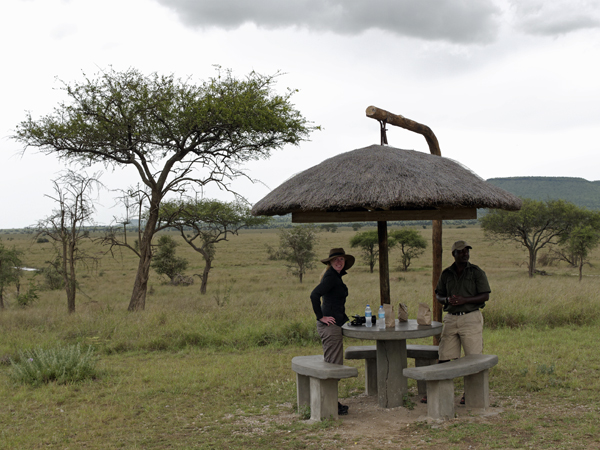
Not long after we again got going, the results of the rain hit us -- this road was underwater!
Prim drove us slowly and carefully across, without incident:
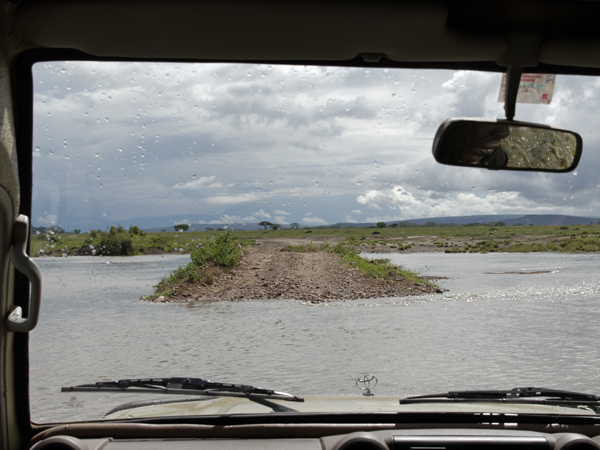
Despite what was now a slight drizzle, this mongoose family was foraging about:

Those babies are sticking close to mom, and are really sweet! Look at that face!!
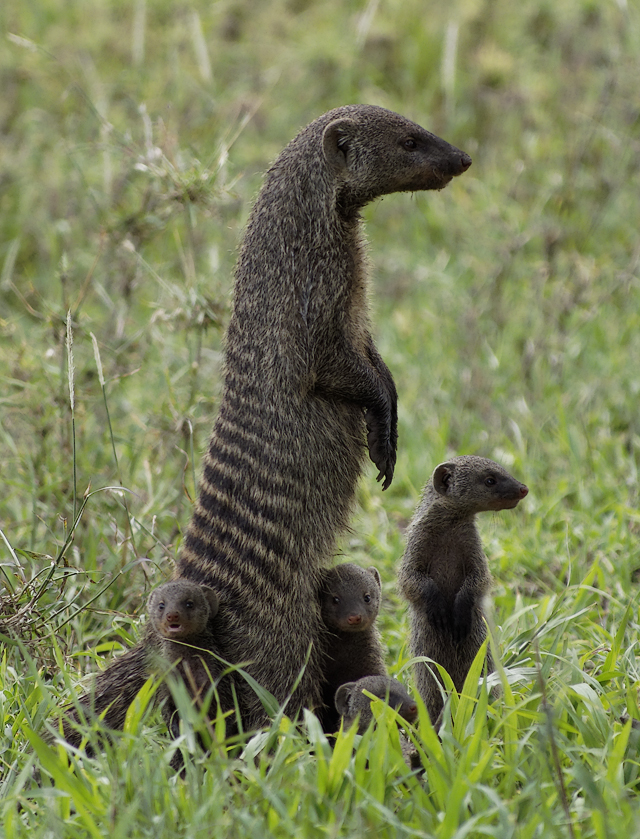
We had stopped a bit too long photographing them, so they got nervous and headed back into the den:
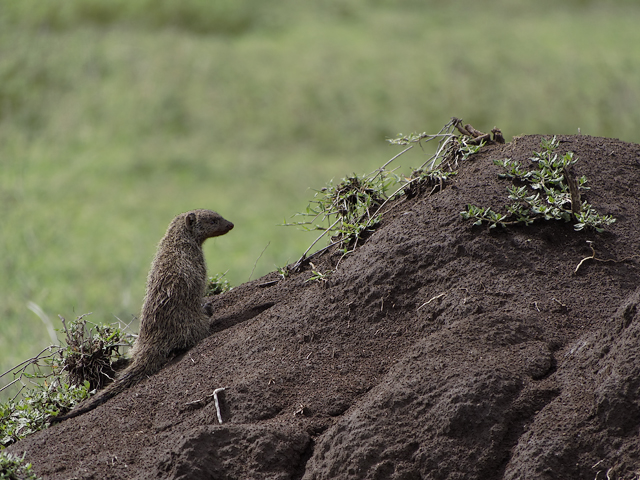
This water buffalo was grazing near the roadside, and decided to stick his tongue out at us...
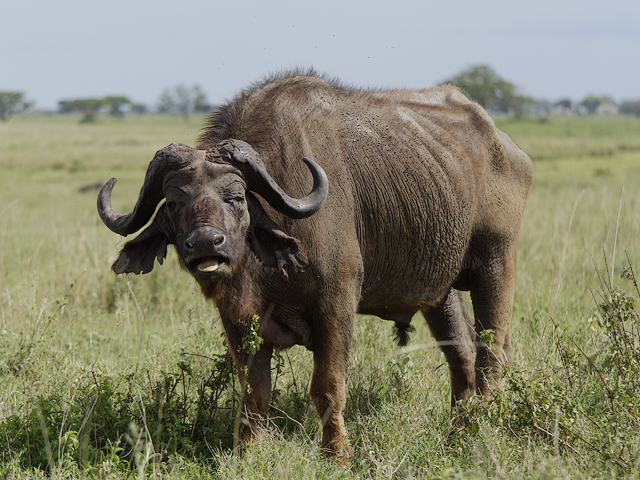
... so we thought he deserved a "headshot". A handsome dude:
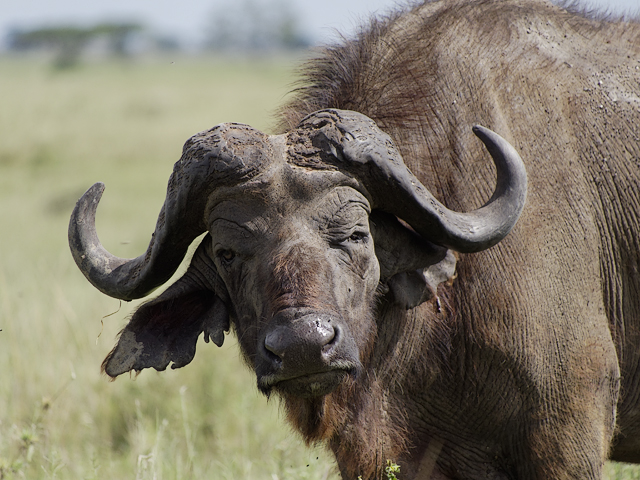
In a little while, we entered the area with the Moru Kopjes:
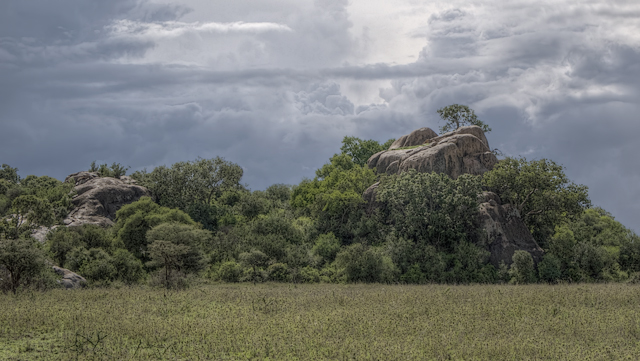 Note: above photo was bracketed and HDR/tonemapped using Photomatix
Note: above photo was bracketed and HDR/tonemapped using Photomatix
Each one was a little different. There was certainly tons of wildlife in there, but hidden from cars & cameras:
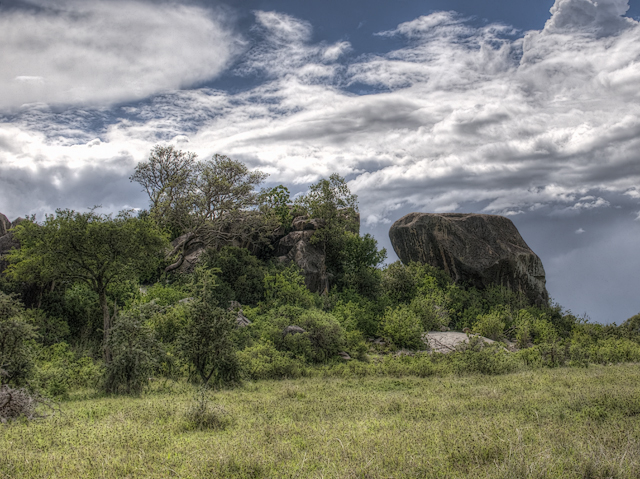 Note: above photo was bracketed and HDR/tonemapped using Photomatix
Note: above photo was bracketed and HDR/tonemapped using Photomatix
On one of the outcroppings, we spied a lion resting:
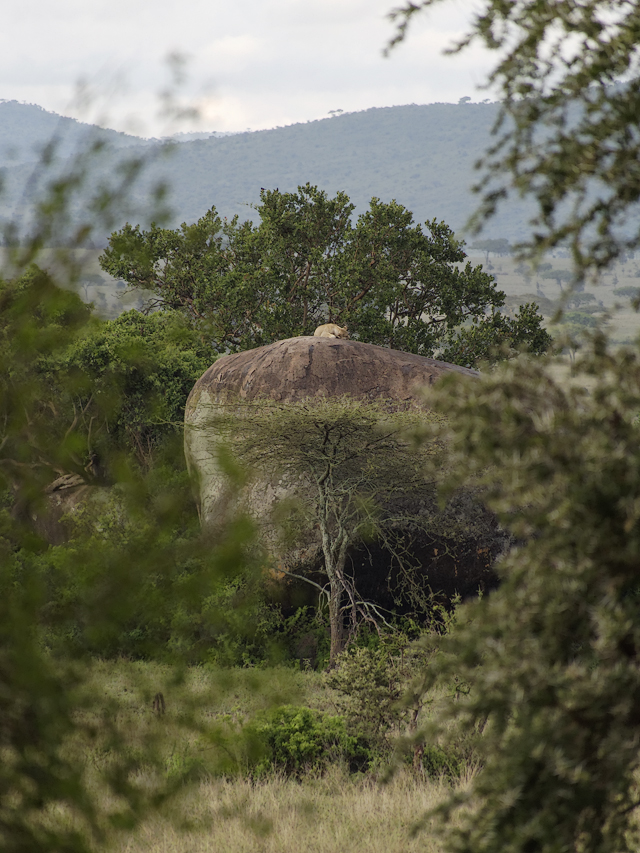
She was lying in the sun to get warm, plus at that height the insects are much less of a nuisance:
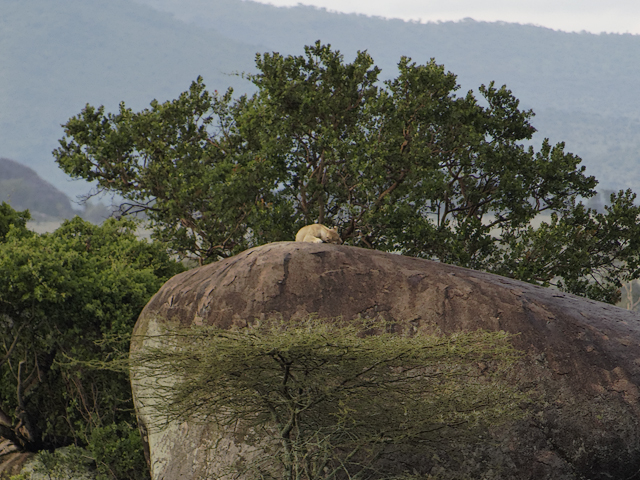
Our last view was as the sun was setting, looking out from our new campsite near one of the kopjes.
You can see others of the Moru Kopjes sticking out from the plain in the distance:
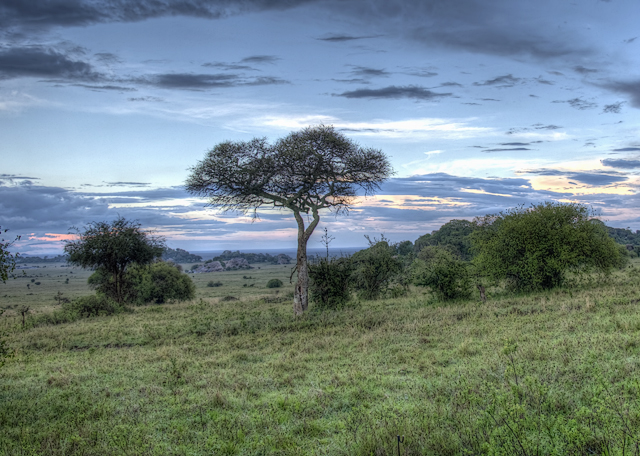 Note: above photo was bracketed and HDR/tonemapped using Photomatix
Note: above photo was bracketed and HDR/tonemapped using Photomatix
We'll give a complete look at the campsite in the next blog post, then we're on to the full-day game drives!
 Herr J ...
Herr J ...  Post a Comment
Post a Comment  Travel tagged
Travel tagged  Serengeti National Park,
Serengeti National Park,  crocodile,
crocodile,  game drive,
game drive,  giraffe,
giraffe,  hippo,
hippo,  impala,
impala,  leopard,
leopard,  leopard tortoise,
leopard tortoise,  mongoose,
mongoose,  superb starling,
superb starling,  vulture,
vulture,  water buffalo
water buffalo  4 References ...
4 References ...  Print Article
Print Article  Email Article
Email Article 



